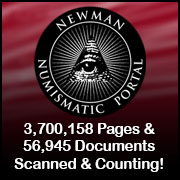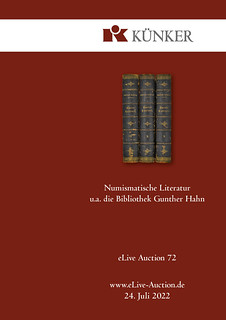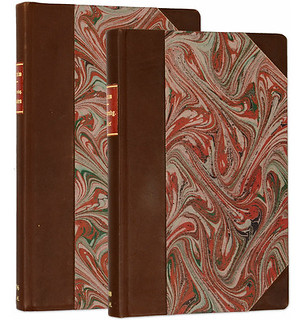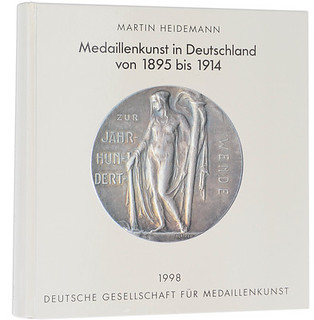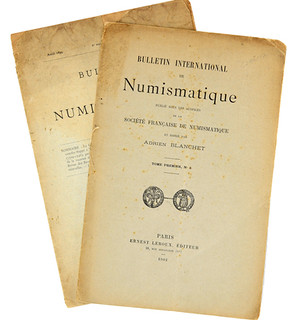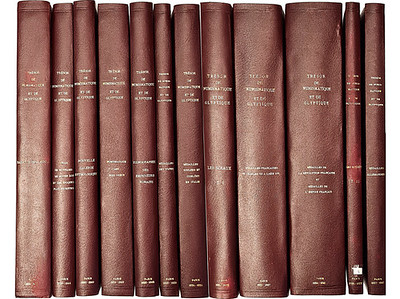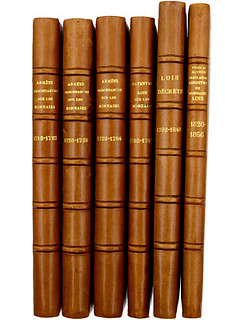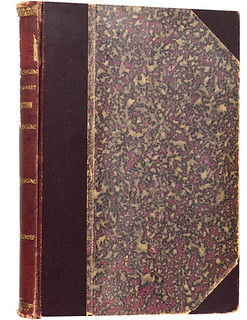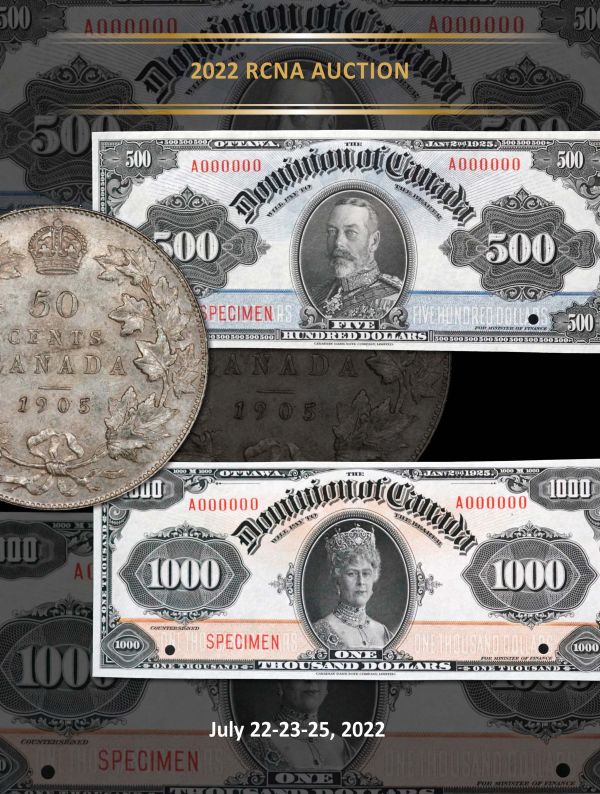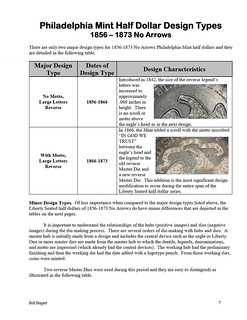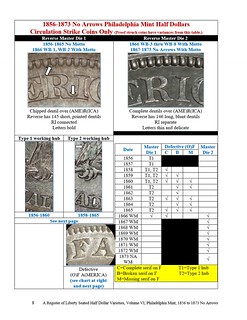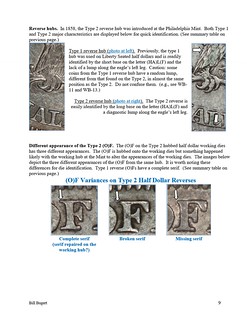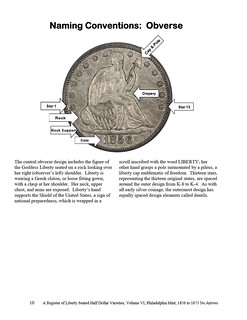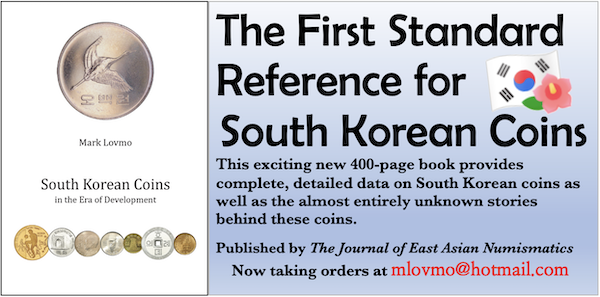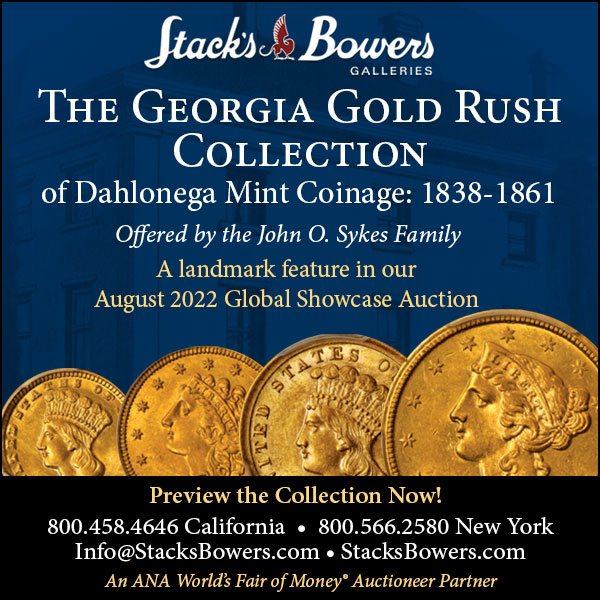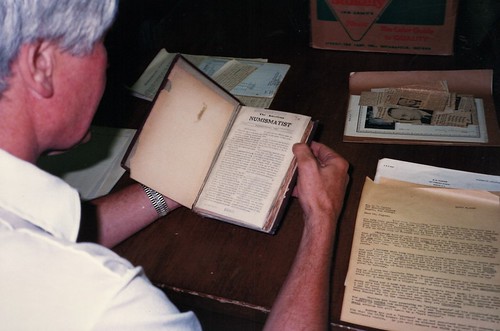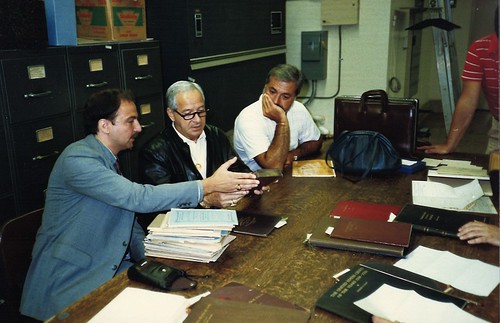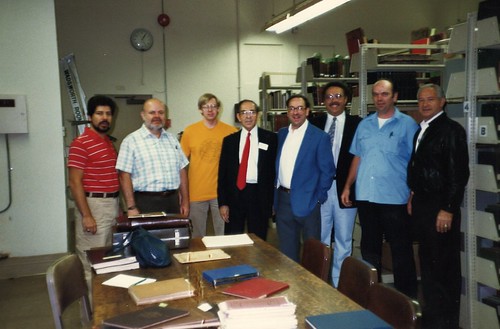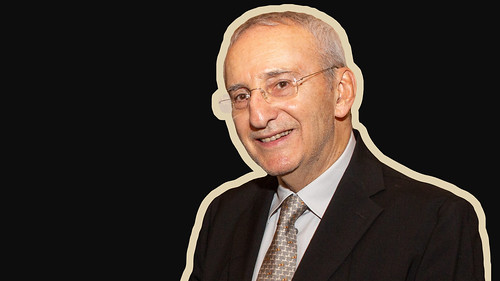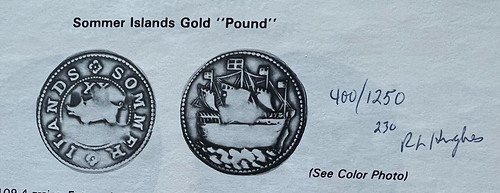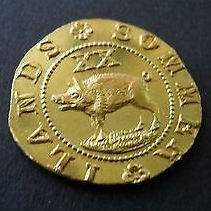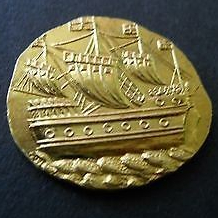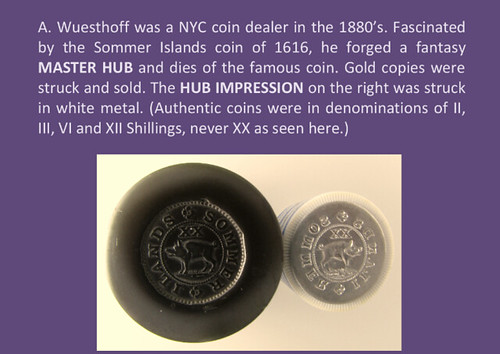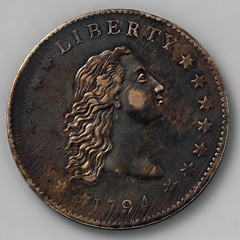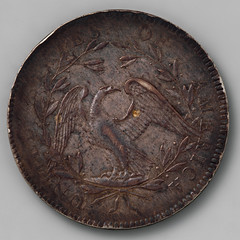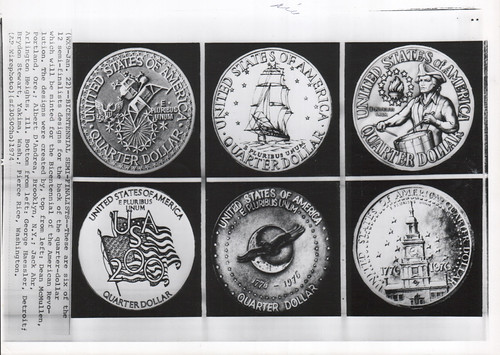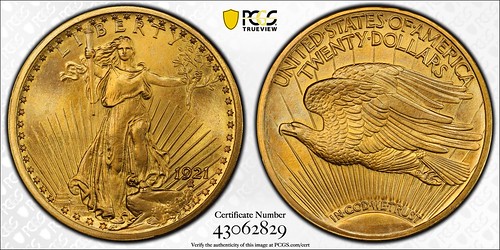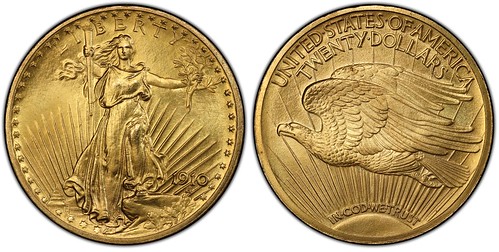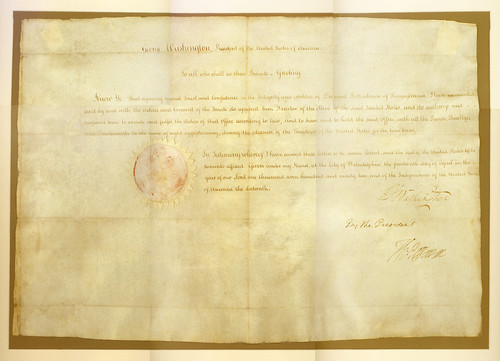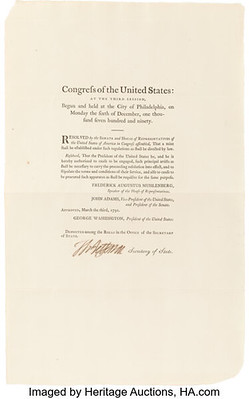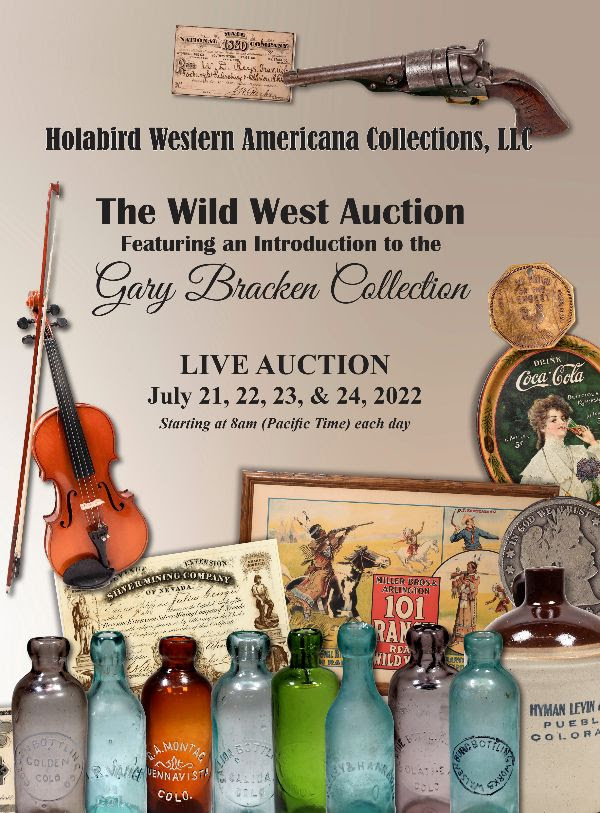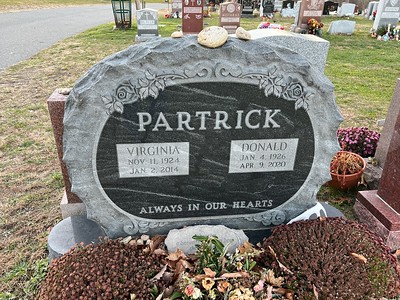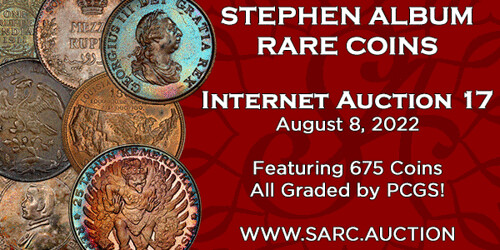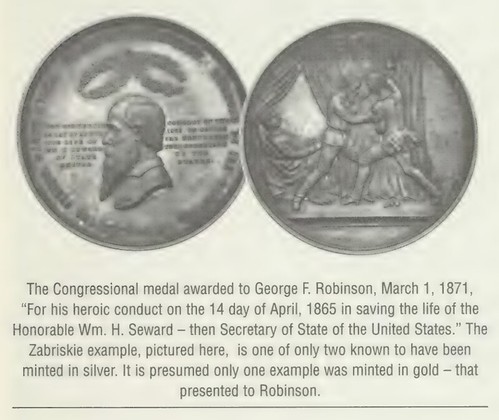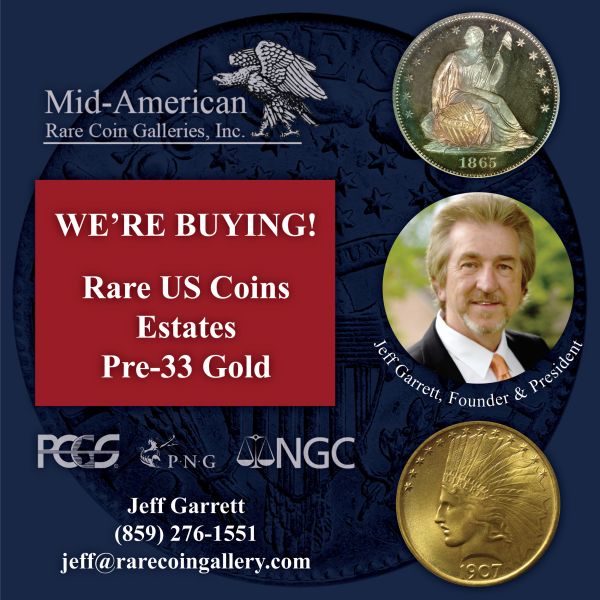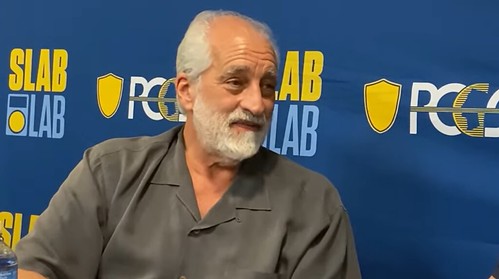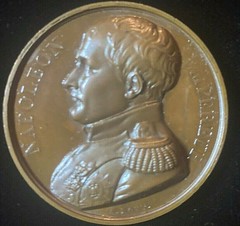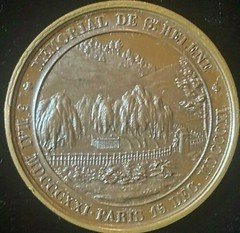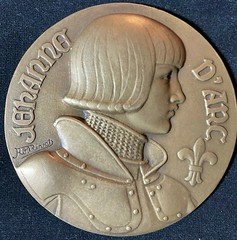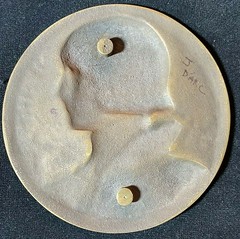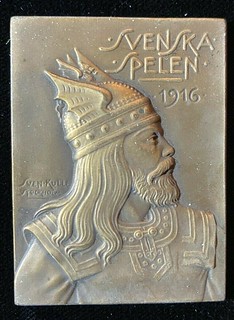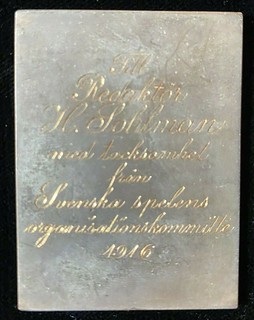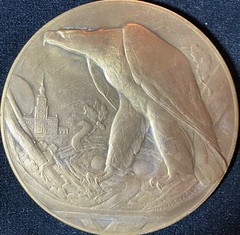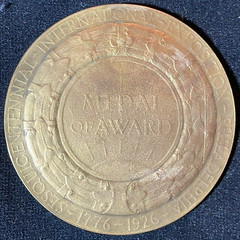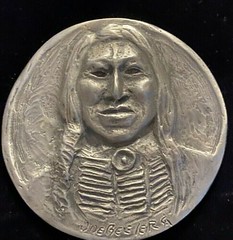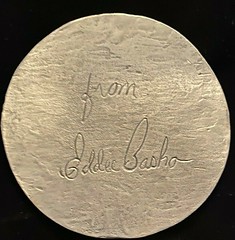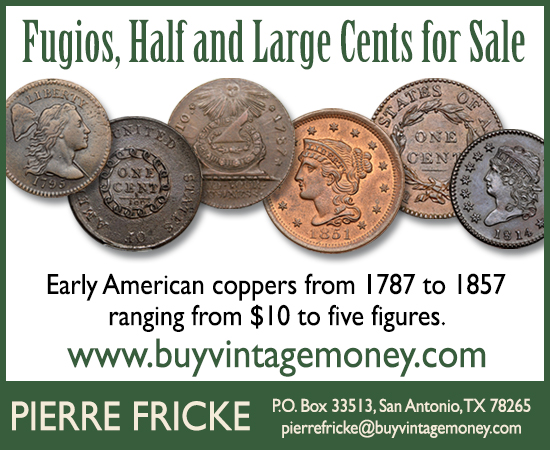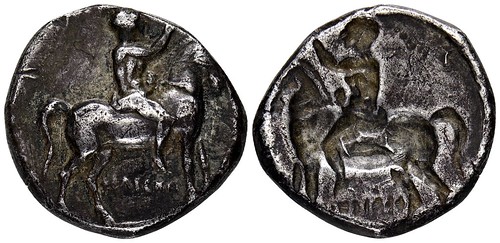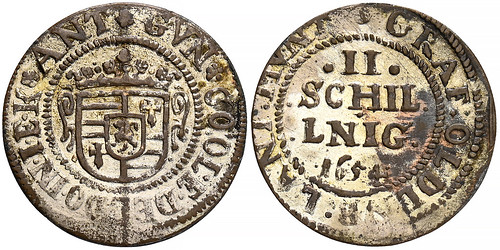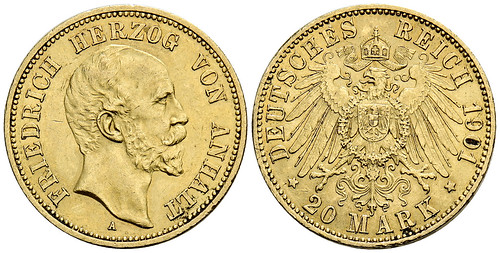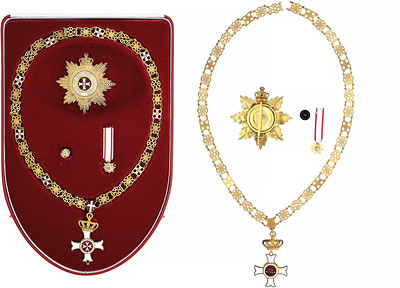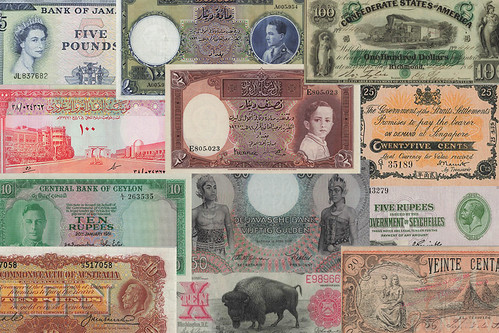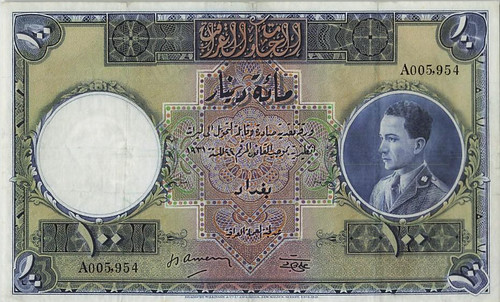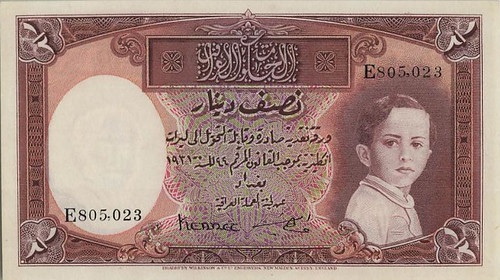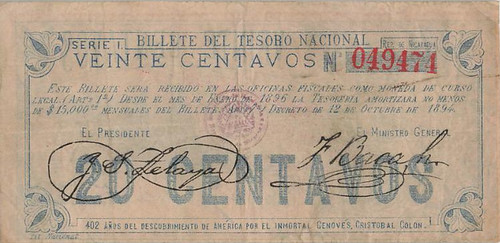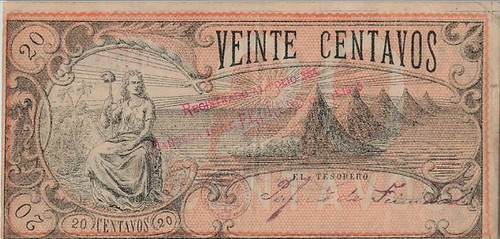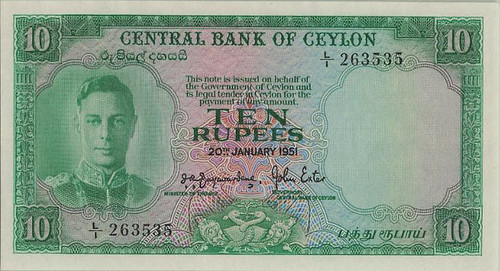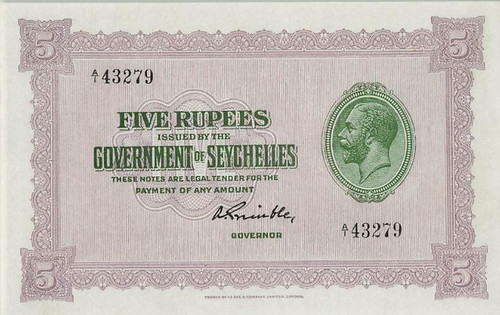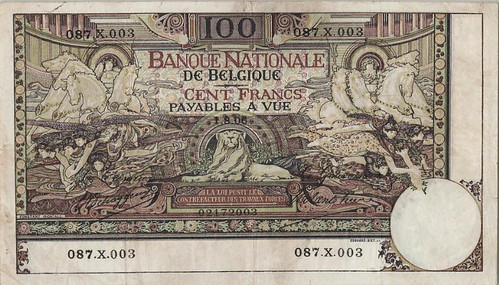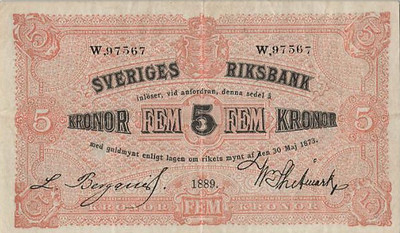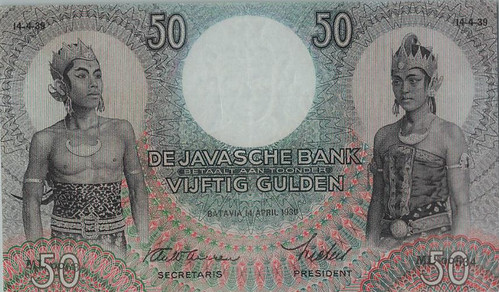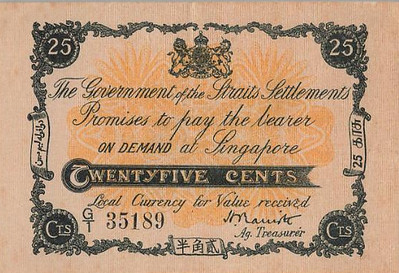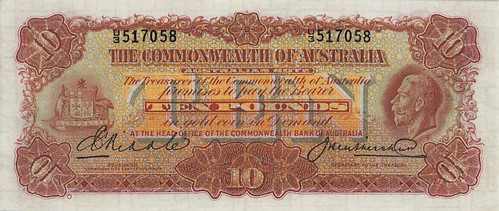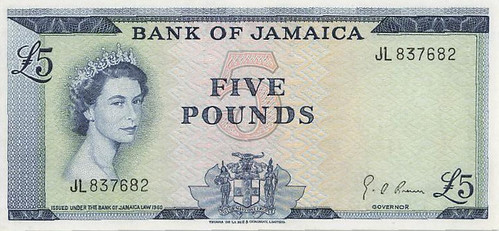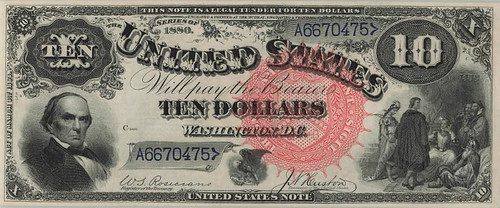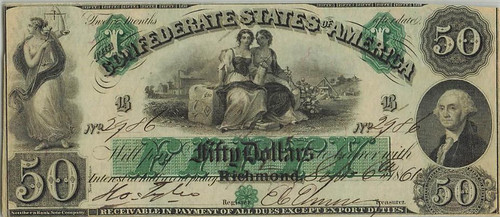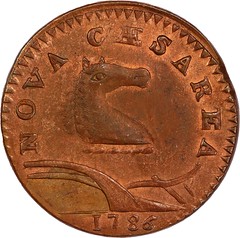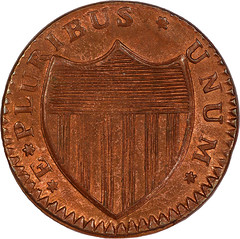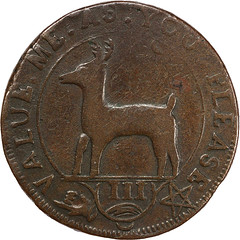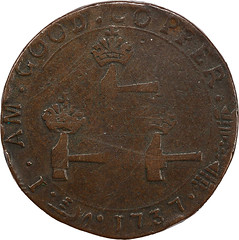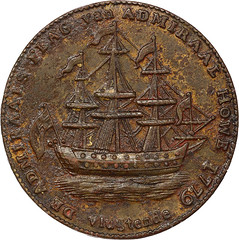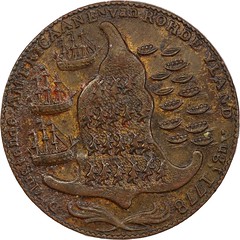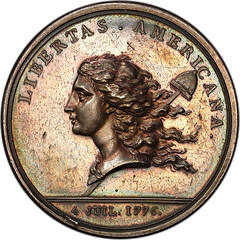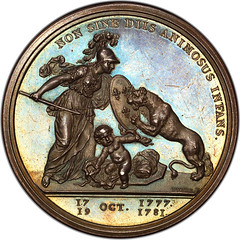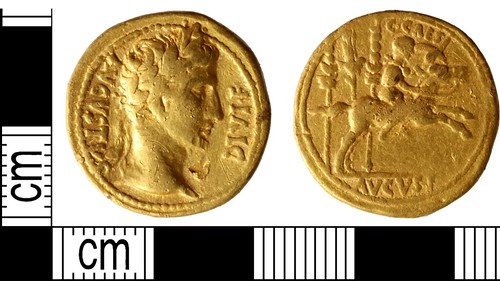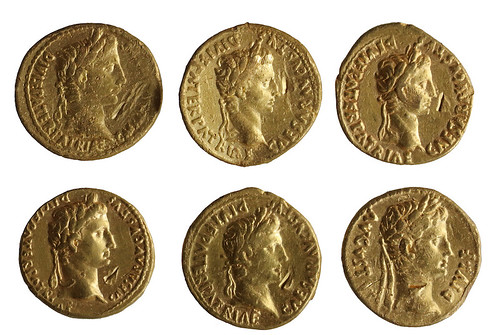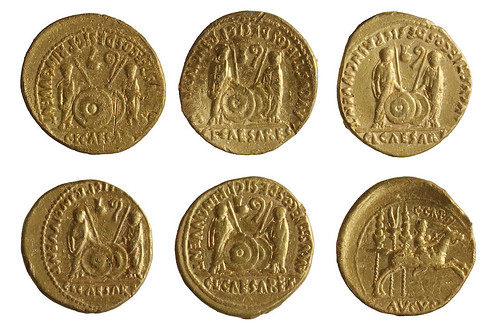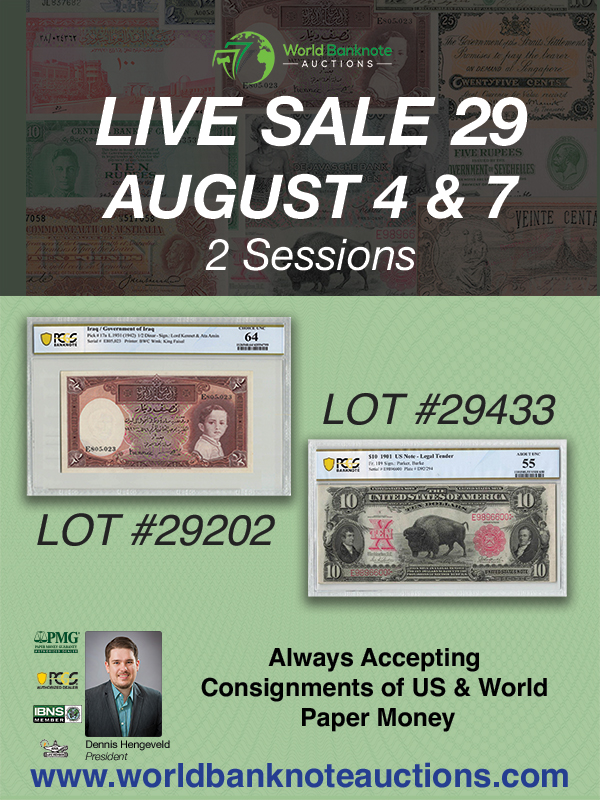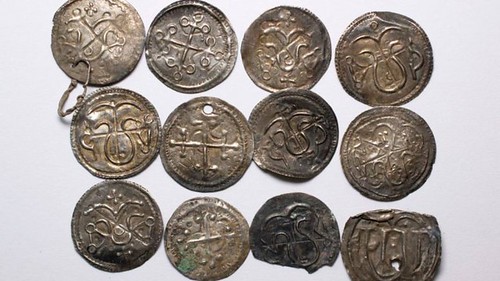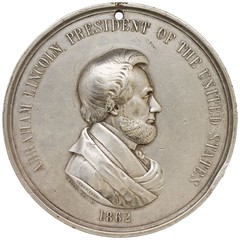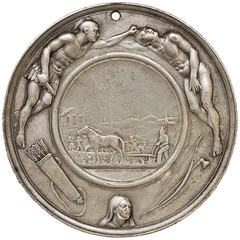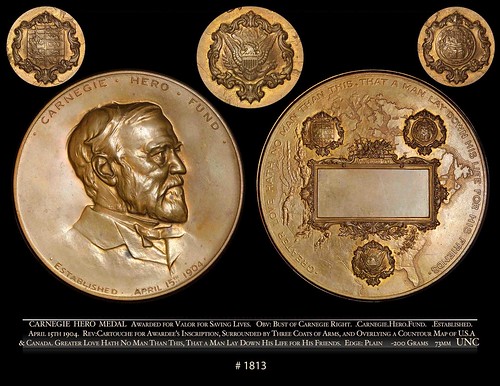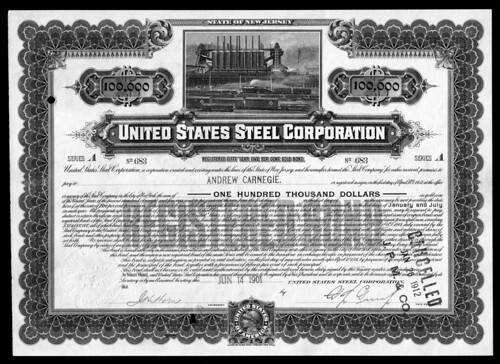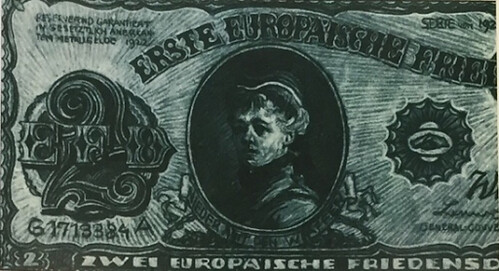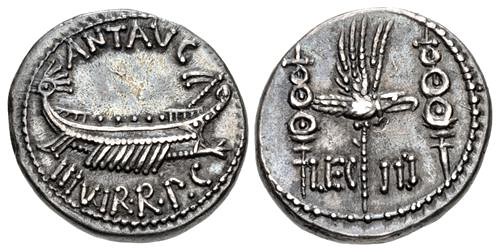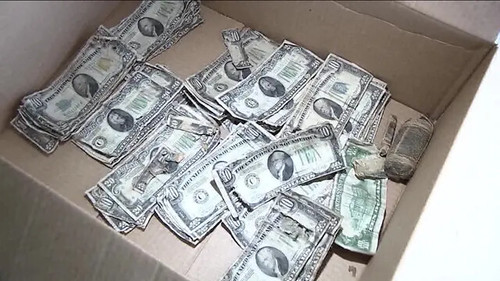
Visit our NBS Sponsors



About UsThe Numismatic Bibliomania Society is a non-profit association devoted to the study and enjoyment of numismatic literature. For more information please see our web site at coinbooks.org SubscriptionsThose wishing to become new E-Sylum subscribers (or wishing to Unsubscribe) can go to the following web page link MembershipThere is a membership application available on the web site Membership Application To join, print the application and return it with your check to the address printed on the application. Print/Digital membership is $40 to addresses in the U.S., and $60 elsewhere. A digital-only membership is available for $25. For those without web access, write to: Charles Heck, Treasurer AsylumFor Asylum mailing address changes and other membership questions, contact Chuck at this email address: treasurer@coinbooks.org SubmissionsTo submit items for publication in The E-Sylum, write to the Editor at this address: whomren@gmail.com BUY THE BOOK BEFORE THE COINSale Calendar |
- WAYNE'S WORDS: THE E-SYLUM JULY 17, 2022
- KÜNKER ELIVE 72 NUMISMATIC LITERATURE
- NEW BOOK: LIBERTY SEATED HALF VARIETIES, VOL. VI
- NEW BOOK: THE CURRENCY OF POLITICS
- KARL MOULTON'S HENRY VOIGT BOOK
- CARNEGIE LIBRARY'S SET OF THE NUMISMATIST
- VIDEO: NEW ORLEANS GOLD COINS 1839-1909
- VIDEO: AN INTERVIEW WITH BASIL DEMETRIADI
- NOTES FROM E-SYLUM READERS: JULY 17, 2022
- OTTAWA RCNA CONVENTION JULY 20-24, 2022
- 2022 ANA HENDELSON COLLECTION EXHIBIT
- 1791 ACT AUTHORIZING THE U.S. MINT
- VOCABULARY TERM: KNUCKLE-JOINT PRESS
- DONALD G. PARTRICK (1926-2020)
- THE ZABRISKIE LEGACY
- REDISCOVERING THE ZABRISKIE COLLECTION
- FRED WEINBERG INTERVIEW, PART TWO
- WEXFORD EBAY MEDAL SELECTIONS JULY 2022
- KÜNKER ELIVE AUCTION 72
- WORLD BANKNOTE AUCTIONS SALE 29
- SYDNEY F. MARTIN COLLECTION PART ONE
- THE HARRY BASS CORE COLLECTION
- GOLD ROMAN COINS FOUND IN NORFOLK
- SILVER COINS OF HARALD BLUETOOTH FOUND
- ANS MAY RETURN PEACE MEDAL TO PAWNEE NATION
- THE CARNEGIE HERO MEDAL
- JOSEF DRACH'S EUROPEAN PEACE DOLLAR
- LOOSE CHANGE: JULY 17, 2022
Click here to read the thin version on the web
Click here to subscribe
Click here to access the complete archive
To comment or submit articles, reply to whomren@gmail.com
Content presented in The E-Sylum is not necessarily researched or independently fact-checked, and views expressed do not necessarily represent those of the Numismatic Bibliomania Society.
WAYNE'S WORDS: THE E-SYLUM JULY 17, 2022
 New subscribers this week include:
Bo Cribbs.
Welcome aboard!
New subscribers this week include:
Bo Cribbs.
Welcome aboard!
Thank you for reading The E-Sylum. If you enjoy it, please send me the email addresses of friends you think may enjoy it as well and I'll send them a subscription. Contact me at whomren@gmail.com anytime regarding your subscription, or questions, comments or suggestions about our content.
This week we open with a numismatic literature sale, two new books and an old one, updates from the Newman Numismatic Portal, notes from E-Sylum readers, convention previews, and more.
Other topics this week include Henry Voigt, Basil Demetriadi, John Pittman, Donald Partrick, Andrew Zabriskie, auction previews, coin finds, the Carnegie Hero Medal and the European Peace Dollar.
To learn more about Liberty Seated Half Dollar die varieties, the first six volumes of The Numismatist, New Orleans gold coins, the Rijksmuseum 1794 dollar, an Act of Congress authorizing the U.S. Mint, the Swedish Games, the Syd Martin and Harry Bass collections, mind-numbingly boring coin shows and the Undead Numismatist, read on. Have a great week, everyone!
Wayne Homren
Editor, The E-Sylum
KÜNKER ELIVE 72 NUMISMATIC LITERATURE
On July 24, 2022, Künker will sell 451 lots of numismatic literature as part of their eLive Auction 72. -Editor
To view the online catalog and bid, see:
https://elive-auction.de/auktionen/100/lose?auction_section=37
To view the .pdf catalog, see:
https://newsletter.kuenker.de/c/40104464/f2815bb23028-relwqo
NEW BOOK: LIBERTY SEATED HALF VARIETIES, VOL. VI
Author Bill Bugert forwarded this press release for his latest book, A Register of Liberty Seated Half Dollar Die Varieties, Volume VI. Congratulations! -Editor
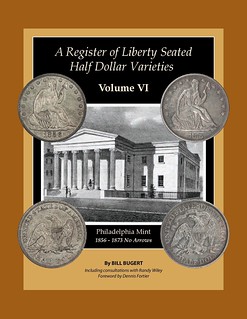 A Register of Liberty Seated Half Dollar Varieties
Volume VI, Philadelphia Mint, 1856-1873 No Arrows
A Register of Liberty Seated Half Dollar Varieties
Volume VI, Philadelphia Mint, 1856-1873 No Arrows
by Bill Bugert
Foreword by Dennis Fortier
With 561 pages and over 1,300 photographs, Volume VI describes all known die marriages (217) for Philadelphia Mint Liberty Seated half dollars from 1856 to 1873 No Arrows inclusive. Included are oversized key diagnostic images, oversized full obverse and reverse images of a late die state example of that die marriage, enhanced die crack diagrams, rarity ratings, important discussion facts, and other related information that will allow you to quickly and easily attribute your half dollars.
This Volume is in the same format as the previous volumes but with some key improvements such as improved images and summary reverse die crack diagrams for most dates. As with previous volumes, Randy Wiley's consultations are included and many of his reference collection half dollars are plated.
Free downloadable pdf copies of Volumes I thru VI, including this new Volume for your tablet or laptop/desktop. See www.lsccweb.org/BillBugertBooks.php .
Hard copies of this Volume will not be available.
NEW BOOK: THE CURRENCY OF POLITICS
This week I came across a review of a new book from Princeton University Press on the broad history and future of money. Also reviewed is one we've mentioned before. -Editor
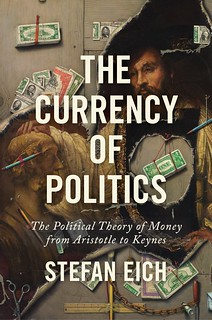 Stefan Eich, The Currency of Politics: The Political Theory of Money from Aristotle to Keynes, Princeton University Press, 2022.
Stefan Eich, The Currency of Politics: The Political Theory of Money from Aristotle to Keynes, Princeton University Press, 2022.
Akinobu Kuroda, A Global History of Money, Routledge, 2020.
We live in a time of unprecedented monetary innovation. Novel private monies like Bitcoin abound, because new technologies have made possible payment systems that bypass traditional banks. With the COVID-19 pandemic having expanded the frontier of unconventional
monetary policies, central banks have been debating whether to create new digital currencies (CBDCs) of their own.
Never before has the future of money been more uncertain – and thus full of possibility. And yet a historical perspective can help us make sense of unfamiliar terrain, because the future of money may well resonate with its deep past.
I say deep
past because it is important to look beyond the familiar notion of money that most people have. They imagine a national currency, issued solely by a state authority within territorial borders. In the United States, there is the dollar; in Japan, there is the yen; and in Europe, there is a great regional currency bloc. But this kind of money is a recent development, dating only to the nineteenth century, and arguably even later.
Before that, there were multiple
and complementary
monies, earmarked for different purposes. I might use one currency to pay taxes (rendering unto Caesar what is Caesar's) and another currency for reciprocal exchanges with my neighbors. Another currency would allow me to buy goods from some other part of the world, and yet another one would allow me to save wealth or invest capital in an enterprise.
We have all grown up in a world of homogenous
national monies, where every territorial jurisdiction has just one currency that must be used for every monetary purpose – from exchange and keeping accounts to paying taxes and storing wealth. But money may someday return to its more historically typical heterogeneous
baseline. It may already be happening.
To read the complete article, see:
The Adventures of Money
(https://www.project-syndicate.org/onpoint/history-of-money-akinobu-kuroda-stefan-eich-by-jonathan-levy-2022-07)
On a related note, Kavan Ratnatunga of Sri Lanka writes:
"The Reserve Bank of India (RBI) Rupee which has so far been legal tender only in India is becoming an international currency. The Indian Silver Rupee was used as legal tender in Ceylon from 1835 to 1917. Maybe the current economic crisis in Sri Lanka may bring it back."
Since we've touched on the subject before, can anyone identify the cover artwork? -Editor
To read the complete article, see:
https://timesofindia.indiatimes.com/blogs/toi-editorials/global-rupee-allowing-rupees-to-settle-foreign-trades-is-a-good-move-it-can-have-long-term-benefits/
(https://timesofindia.indiatimes.com/blogs/toi-editorials/global-rupee-allowing-rupees-to-settle-foreign-trades-is-a-good-move-it-can-have-long-term-benefits/)
To read the earlier E-Sylum article, see:
NEW BOOK: A GLOBAL HISTORY OF MONEY
(https://www.coinbooks.org/v24/esylum_v24n43a03.html)
KARL MOULTON'S HENRY VOIGT BOOK
Bryce Brown writes:
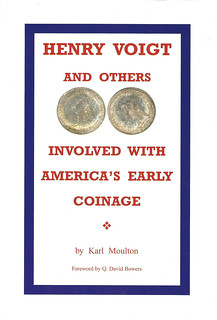 "In the E-Sylum issue Vol 10, No. 29 of July 22, 2007, Karl Moulton discussed his new book "Henry Voigt and Others Involved in America's Early Coinage". After providing a description and details on how to order the book (blue cloth, dust jacket), he finished with "As a treat for the dedicated bibliophile, plans are in the works for a deluxe leatherbound, large paper, and extra illustrated version to be ready later this year. Stay tuned."
"In the E-Sylum issue Vol 10, No. 29 of July 22, 2007, Karl Moulton discussed his new book "Henry Voigt and Others Involved in America's Early Coinage". After providing a description and details on how to order the book (blue cloth, dust jacket), he finished with "As a treat for the dedicated bibliophile, plans are in the works for a deluxe leatherbound, large paper, and extra illustrated version to be ready later this year. Stay tuned."
I cannot find any further mention of this deluxe version, nor any later ads or marketing materials. Nor can I quickly find an appearance of this version in numismatic literature auctions. Is anyone aware of any such marketing materials or ads?"
I'm not aware of a deluxe version. I reached out to Karl's friend and book collaborator Steve Tompkins. -Editor
Steve writes:
"I am not 100% sure, but I believe Karl never followed through with this, as the book did not meet his expectations. There is still great information in the book, but it was not put together in the best way.
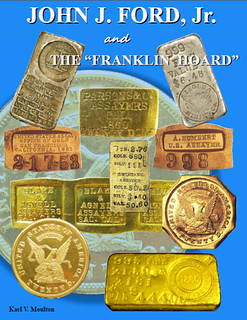 "I do remember that I threatened Karl that one day I would redo the book and make it bigger & better...He scoffed at that, as we had recently finished working on his John J. Ford and the Franklin Hoard book (2 rewrites, 5 years and a thousand page behemoth!!!).
"I do remember that I threatened Karl that one day I would redo the book and make it bigger & better...He scoffed at that, as we had recently finished working on his John J. Ford and the Franklin Hoard book (2 rewrites, 5 years and a thousand page behemoth!!!).
"After his recent death, I was able to acquire his entire library, auction catalog inventory, research notes, correspondence and remaining copies of his books, both John J. Ford and the Franklin Hoard and Henry Voigt and Others involved with America's Early Coinage. The books are listed on my website if anyone desires a copy.
"If someone wants a leatherbound of the Voigt book, you could certainly cut the covers off of the hardbound edition and have one made, as there are no unbound signatures in what I acquired. Same goes for the Ford book."
Thanks. I'm glad to know the books are still available. -Editor
For more information, or to order, see:
http://www.earlyunitedstatescoins.com/store/c14/Numismatic.html
To read earlier E-Sylum articles, see:
MOULTON HENRY VOIGHT BOOK NOW AVAILABLE
(https://www.coinbooks.org/esylum_v10n29a02.html)
KARL V. MOULTON (1953-2021)
(https://www.coinbooks.org/v24/esylum_v24n50a05.html)
NEW BOOK: JOHN J. FORD, JR., AND THE FRANKLIN HOARD
(https://www.coinbooks.org/esylum_v15n53a04.html)
BOOK REVIEW: JOHN J. FORD AND THE FRANKLIN HOARD
(https://www.coinbooks.org/esylum_v16n48a08.html)
CARNEGIE LIBRARY'S SET OF THE NUMISMATIST
The latest additions to the Newman Numismatic Portal are photographs of Pittsburgh numismatic events, c. 1989-1990. Project Coordinator Len Augsburger provided the following report. -Editor
The Carnegie Library Copy of the First Six Volumes of The Numismatist
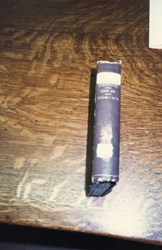 Newman Portal recently processed a group of three photo albums, loaned by Wayne Homren, capturing Pittsburgh numismatic events, c. 1989-1990. Included were the
Newman Portal recently processed a group of three photo albums, loaned by Wayne Homren, capturing Pittsburgh numismatic events, c. 1989-1990. Included were the Invasion of Pittsburgh,
which was a visit to the Carnegie Library during the 1989 Pittsburgh ANA convention. Homren also photo-documented tours of the Frank & Laurese Katen and Dave Hirt libraries, and further captured numerous images related to the 1989 ANA convention. NNP Intern Kellen Hoard compiled metadata for these photo albums, which are now posted.
The highlight of the Carnegie Library tour was the Carnegie copy of the first six volumes of The Numismatist. Ken Lowe mentioned this set in the Money Tree auction sale no. 7 (11/1989), noting In our [March 1989] commentary, we accounted for 13 complete sets of The Numismatist...Another set has since surfaced. This August at the [Pittsburgh] ANA Convention, we were fortunate to be invited to the Carnegie Museum in Pittsburgh to see George Clapp's numismatic library which he bequeathed to them. In the museum holdings was another complete set from 1888 through 1950, which apparently had been forgotten by the collecting fraternity (but not by P. Scott Rubin).
Champa, apparently as a result of this tour, donated rebinding services to the Carnegie, as mentioned by Lowe in the Money Tree sale no. 23 (6/1995, lot 1), …the George Clapp set, one leaf in photocopy, rebound by Alan Grace courtesy of Armand Champa.
Images:
- Carnegie copy of The Numismatist, vols. 1-6
- Del Bland inspecting the Carnegie Library copy of The Numismatist, vols. 1-6
- Joe Falgione of the Carnegie Library shows Armand Champa the first volume of The Numismatist while J. Roger Persichilli and Mark Auerbach look on.
Links to Wayne Homren Photo Albums:
https://nnp.wustl.edu/library/imagecollection/517293
https://nnp.wustl.edu/library/imagecollection/517294
https://nnp.wustl.edu/library/imagecollection/517295
Del Bland and John Burns visited the library on a different day than the "Invasion of Pittsburgh" group.
I was a member of the local organizing committee for the 1989 Pittsburgh ANA convention. These albums were a great trip down Memory Lane. So many of my old numismatic friends have passed from the scene. I'm glad I was able to capture these images and share them with the community through the Newman Portal. Who else has photos to contribute? Let us know! -Editor
Several of the members of the Invasion of Pittsburgh on August 11, 1989, at the Carnegie Library. Pictured: Mark Auerbach, George Kolbe, Wayne Homren, Frank Katen, Ken Lowe, Myron Xenos, John Bergman, and Armand Champa.
VIDEO: NEW ORLEANS GOLD COINS 1839-1909
These are selections from the David Lisot Video Library that feature news and personalities from the world of coin collecting. David has been attending coin conventions since 1972 and began videotaping in 1985. The Newman Numismatic Portal now lists all David's videos on their website at:
https://nnp.wustl.edu/library/multimediadetail/522852
Here's one with legendary collector John Pittman discussing the history and coins of the New Orleans Mint. -Editor
Overview of New Orleans Gold Coins 1839-1909
Baltimore ANA Convention, August 1, 1993.
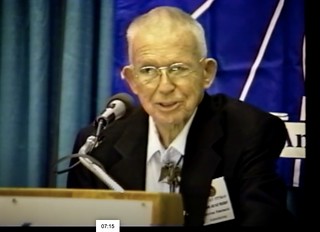 This video covers the history of the New Orleans Mint, with special emphasis on the minting of gold coins. Information is presented as to the probable source of gold bullion used in striking New Orleans coins. The present-day whereabouts of some of these very rare New Orleans gold coins is explored. Special emphasis is given to the double eagles struck at the New Orleans Mint. Speaker: John Jay Pittman.
This video covers the history of the New Orleans Mint, with special emphasis on the minting of gold coins. Information is presented as to the probable source of gold bullion used in striking New Orleans coins. The present-day whereabouts of some of these very rare New Orleans gold coins is explored. Special emphasis is given to the double eagles struck at the New Orleans Mint. Speaker: John Jay Pittman.
David adds:
"John Jay Pittman is a legend in numismatics. He was president of the American Numismatic Association simultaneously while being president of the Canadian Numismatic Association. When his coin collection was sold by David Akers it brought millions of dollars. I had the pleasure of serving with John Jay in 1995 on the ANA Board. He took me under his wing and taught me how to navigate politically in numismatics. He was a friend to me and a serious numismatist. He is one of the great personalities I have had the opportunity to have known in this wonderful hobby."
The video is available for viewing on NNP at:
https://nnp.wustl.edu/library/book/577933
VIDEO: AN INTERVIEW WITH BASIL DEMETRIADI
For years I'd heard from biblio-friends about the legendary Athens library of Basil Demetriadi. Last week's American Numismatic Society Long Table session provided ANS members with a remote tour hosted by ANS President Dr. Ute Wartenberg on location with Demetriadi himself. A video of the session has been made available to the general public on the ANS website - check it out! The library is a mecca for researchers, attempting to house every book, catalog and photograph of ancient Greek coinage. -Editor
One of the most recognizable names in the field of numismatics, Basil Demetriadi, known as BCD, has collected coins and books for many decades. His coins were sold in a series of famous auction sales beginning in the early 2000s. His library, which serves scholars, dealers, and collectors, vividly illustrates BCD's passion for numismatics and research. ANS President Dr. Ute Wartenberg, who has known BCD since her undergraduate days, will sit down with him to speak about the methods, concepts, and challenges while putting together a world-class library. This interview will be held live at the BCD Library in Athens, which houses the world's most extensive collection of numismatic books and auction catalogues.
To watch the complete video, see:
Long Table 100. An Interview with Basil Demetriadi
(https://www.youtube.com/watch?v=zl8jPOiyr9c)
NOTES FROM E-SYLUM READERS: JULY 17, 2022
Justice for Zerbe?
Researcher and author
Eric Hodge of the UK writes:
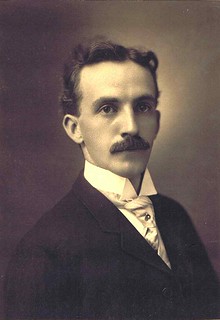 "I am not American. I am not a member of the American Numismatic Association. I am the first to admit that I am not an expert on
American numismatics. I am, however, an interested numismatist. Interested enough to be worried by
the apparent lack of correspondence and concern regarding the recent published information about
Farran Zerbe.
"I am not American. I am not a member of the American Numismatic Association. I am the first to admit that I am not an expert on
American numismatics. I am, however, an interested numismatist. Interested enough to be worried by
the apparent lack of correspondence and concern regarding the recent published information about
Farran Zerbe.
"Under the heading ‘More on Zerbe and the 1909 ANA Election' published in The E-Sylum: Volume 25, Number 26, June 26, 2022, Article 12, Douglas Ward wrote what I considered a rather compelling article rebutting much (if not all) of what David Alexander wrote in a 2016 CoinWeek article.
"It was in a previous issue of The E-Sylum: Volume 24, Number 39, September 26, 2021, Article 17, headed ‘Zerbe Name Removed from ANA Top Award' that I first became aware of the acrimony directed at Farran Zerbe. I was previously aware of Mr. Zerbe from articles and books I had read and was aware of some issues raised, but certainly not to the extent that was now published.
"At the end of this article about the ‘Name Removed' the Editor Wayne Homren wrote; ‘This action seems sudden and arbitrary with no prior discussion of the issues.' He also made other extremely valid points.
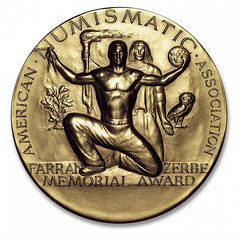 "With the rebuttal article by Douglas Ward I would have expected to read a flurry of opinions, for or against what he wrote. The fact that Mr. Ward finished his comments with ‘One only needed to read the last statements in Mr. Alexander's article to understand his true motivation.' and then went on to mention Chester L. Krause and the proposal to rename the Zerbe award the Krause award makes me wonder if there is some hidden agenda, some conspiracy to alter history, something for us all to worry about. Justice not only needs to be done but it needs to be seen to be done. In this case, in my opinion, it has not been seen to be done."
"With the rebuttal article by Douglas Ward I would have expected to read a flurry of opinions, for or against what he wrote. The fact that Mr. Ward finished his comments with ‘One only needed to read the last statements in Mr. Alexander's article to understand his true motivation.' and then went on to mention Chester L. Krause and the proposal to rename the Zerbe award the Krause award makes me wonder if there is some hidden agenda, some conspiracy to alter history, something for us all to worry about. Justice not only needs to be done but it needs to be seen to be done. In this case, in my opinion, it has not been seen to be done."
Thanks, Eric. I've been surprised myself at the lack of on-the-record commentary on either side of this question, either here or in other publications. -Editor
To read the earlier E-Sylum articles, see:
ZERBE NAME REMOVED FROM ANA TOP AWARD
(https://www.coinbooks.org/v24/esylum_v24n39a17.html)
MORE ON ZERBE AND THE 1909 ANA ELECTION
(https://www.coinbooks.org/v25/esylum_v25n26a12.html)
Joe Bickley Revealed
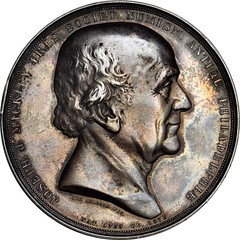 Pete Smith asked about an old newspaper article's reference to a "Joe Bickley" as owner of an 1804 dollar later purchased by Reed Hawn.
Julia Casey writes:
Pete Smith asked about an old newspaper article's reference to a "Joe Bickley" as owner of an 1804 dollar later purchased by Reed Hawn.
Julia Casey writes:
"I had to drop everything for the Smarty-Pants pursuit! I think I figured it out ... "Joe Bickley" is Joseph J. Mickley. I put it together when I saw that Reed Hawn had owned the Massachusetts Historical Society 1804 Dollar. I then went to Newman/Bressett and found that Mickley had owned that example. Newsday's folksy tone is probably the source of this typo."
Julia's detective skills are up there with the best of them. Her answer makes a lot of sense to me. I wouldn't call it a typo - the reporter likely misheard the name and didn't bother checking the facts before publishing. -Editor
Pete Smith writes:
"I hadn't figured out the Mickley connection until after I found that Bickley was not mentioned in the Newman Portal. I think it was just sloppy reporting by a writer with little background in numismatics.
"Congratulations to Julia for becoming Miss Smarty-Pants again."
To read the earlier E-Sylum article, see:
RICHARD REED HAWN (1949-2022)
(https://www.coinbooks.org/v25/esylum_v25n28a05.html)
More on M. H. Rubenstein
Regarding the Long Island dealer M. H. Rubenstein,
John Madlon writes:
"I saw your note in last week's E-Sylum looking for information on Mel Rubenstein (not Martin) who had a coin shop in Bay Shore, NY, and I believe I can be of some help. I lived a few towns over back in the 80's and 90's, and my grandfather would bring me to his shop every so often. Rubenstein had a shop in a strip mall on the South Service Road of Sunrise Highway (NYS Route 27), the tile shop a few doors down was owned by my neighbor's sister and her husband.
"He sold safes, coins and supplies. The front part of his shop had the safes, then behind them a decent assortment of supplies, and finally a u-shaped glass counter which held the coins. The left side was US, the right was foreign, and the center had the register, some ingots/bullion and the ever-present jumbo tin of Danish butter cookies. His wife worked at the shop as well, but I can't remember her name.
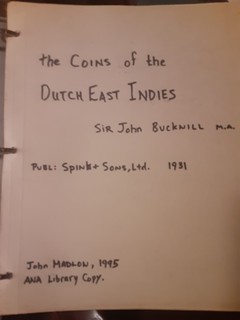 "The empty cookie tins would hold the "junque" boxes, where in 1993 I found two copper coins from the Dutch East Indies, a Duit and a Half Stuiver from 1811. Those two coins were what started me on my lifelong interest in East and Southeast Asian coins. A few years later, in 1995, when I received a YN scholarship to attend the ANA Summer Seminar I found a copy of Sir John Bucknill's "The Coins of the Dutch East Indies" (Spink, 1931) in the ANA library. That opened up (literally) a whole new world of numismatics for me, it was just absolutely mystifying and held my interest like nothing else had before. I photocopied that book in its entirety, and it still resides in my numismatic library, three hole punched and bound up in a binder which I "borrowed" from my dad's office (the cover page I made for it is attached) I must have been a sight, a scruffy 16 year old photocopying this obscure book at the library photocopier, feeding it piles of change.
"The empty cookie tins would hold the "junque" boxes, where in 1993 I found two copper coins from the Dutch East Indies, a Duit and a Half Stuiver from 1811. Those two coins were what started me on my lifelong interest in East and Southeast Asian coins. A few years later, in 1995, when I received a YN scholarship to attend the ANA Summer Seminar I found a copy of Sir John Bucknill's "The Coins of the Dutch East Indies" (Spink, 1931) in the ANA library. That opened up (literally) a whole new world of numismatics for me, it was just absolutely mystifying and held my interest like nothing else had before. I photocopied that book in its entirety, and it still resides in my numismatic library, three hole punched and bound up in a binder which I "borrowed" from my dad's office (the cover page I made for it is attached) I must have been a sight, a scruffy 16 year old photocopying this obscure book at the library photocopier, feeding it piles of change.
"But back to Mel, he was wonderfully patient with teenaged me asking all sorts of questions and poking about the cheap bins of coins and junk silver. I have nothing but the fondest memories of him and his shop. He used to put out fixed price lists, a few of which I still have tucked away in a box somewhere.
"Hope this helps somewhat. Sorry I ended up writing mostly about myself, but he holds a really sentimental place for me. "
Thanks - great story. Julia Casey found an ad from the Watertown Daily Times (October 10, 1974) where M. H. Rubenstein was visiting towns as a coin buyer representing the Edison Coin Company of New York. -Editor
To read the earlier E-Sylum article, see:
RICHARD REED HAWN (1949-2022)
(https://www.coinbooks.org/v25/esylum_v25n28a05.html)
More on the Fantasy Sommer Island Gold "Pound"
"I attended and actively bid in all four Bowers and Ruddy Johns Hopkins University / Garrett auctions (QDB told me I was one of only 34 who attended all four sales) and heavily annotated my catalogues. RL (Bob) Hughes, once a prominent dealer (and still with us),
bought the Wuesthoff Sommers Island gold pound
which opened at $400 and hammered for $1250.
"I have not seen it since but my best guess is the late Donald G Partrick subsequently acquired it. If so, it would have been returned by Heritage to the Partrick family along with other counterfeits (ie casts, electrotypes) found in the collection as Heritage avoids marketing such items - this info came to me from Heritage. While this fantasy could have a legitimate place in numismatics (like Bolen, C. Wyllys Betts copies, etc), Heritage's view has merit in these litigious times."
Thanks. Buyers and sellers can always choose where to spend their time and money. As for myself, I would contend that when properly documented and described, copies and fantasies have a very legitimate place in numismatics - they can help inform and educate us all, and are interesting collectibles in their own right. -Editor
Sam Deep writes:
"The hub that made the die that created the gold Sommer Islands fantasy piece was in my "Off the Beaten Numismatic Path" collection. Last year I gave an ANA presentation featuring the collection and the exhibit that was first runner up at the 2008 Baltimore Convention.
I found the hub at an ANA Convention many years ago, and picked up the white metal impressions at a PAN Show some years later. You might guess how exciting a find they were to go with the hub."
Very cool item! -Editor
To read the earlier E-Sylum article, see:
THE SOMMERS ISLAND FRAUD
(https://www.coinbooks.org/v25/esylum_v25n28a13.html)
More on the Rijksmuseum 1794 Dollar
Henk Groenendijk writes:
"The Rijksmuseum in Amsterdam has a website where many items from the collection are shown in high resolution. This includes the 1794 dollar.
Only the obverse image was available on the site, but Henk reached out to Rijksmuseum officials who provided high-resolution images of both sides of the coin. Thank you! -Editor
To view the obverse image online, see:
https://www.rijksmuseum.nl/nl/collectie/KOG-MP-1-5152
To read the earlier E-Sylum article, see:
NOTES FROM E-SYLUM READERS: JULY 10, 2022 : More on the Rijksmuseum Coin Exhibit
(https://www.coinbooks.org/v25/esylum_v25n28a10.html)
More on Federal Reserve Bank Bags
Pete Smith writes:
"I wrote to David Lange after the item on Mint bags appeared in The E-Sylum last week. I did not share this correspondence with The E-Sylum.
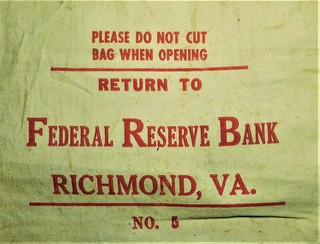 "I worked for Minneapolis Gold and Silver during 2003 to 2006. They received frequent shipments of 90% silver in used cloth bags. The used bags were thrown in a large cardboard box and they repackaged the coins in new bags with their client's name. I was allowed to look through the bags and pick out ones I wanted for my collection.
"I worked for Minneapolis Gold and Silver during 2003 to 2006. They received frequent shipments of 90% silver in used cloth bags. The used bags were thrown in a large cardboard box and they repackaged the coins in new bags with their client's name. I was allowed to look through the bags and pick out ones I wanted for my collection.
"I accumulated 31 different bags for Federal Reserve Banks including a set for the twelve different banks. The bags come in different sizes and have identification numbers that I don't understand.
"I have one bag for the Omaha Branch of the Kansas City Branch and one for the Louisville Branch of Saint Louis. I suspect there could be other branch bank bags.
"Whoever writes the reference book on Federal Reserve bank bags will have to deal with different sizes, different dates, different colors, different series numbers and the branch banks. I suspect that my accumulation is a small fraction of the whole field of study."
I guess I shouldn't be surprised that Pete is the first to report having a complete set. Thanks! -Editor
To read the earlier E-Sylum article, see:
NOTES FROM E-SYLUM READERS: JULY 10, 2022 : Federal Reserve Bank Bags
(https://www.coinbooks.org/v25/esylum_v25n28a10.html)
Print-on-Demand Providers
Peter Jones asked about print-on-demand provider that offer formats other than perfect binding.
Dick Hanscom writes:
"I use 48hourbooks - https://www.48hrbooks.com"
Thanks! I passed this along to Peter. -Editor
To read the earlier E-Sylum article, see:
NOTES FROM E-SYLUM READERS: JULY 10, 2022 : Query: Print-on-Demand Sewn Bindings
(https://www.coinbooks.org/v25/esylum_v25n28a10.html)
Bicentennial Coin Design Finalists Photo
Dave Lange writes:
"I recently purchased a photograph that likely was published in coin periodicals at the time, but it was nice to have an actual print of the press release photo. It shows several finalists in the competition for America's three Bicentennial coins. Interestingly, only Jack Ahr's drummer boy would make the final cut.
"Another photo I really wanted to buy but on which I was outbid was an image from 1926. It shows Oregon Trail pioneer Ezra Meeker meeting with members of Congress about the bill for commemorative half dollars honoring the OT's role in American history. Meeker was the principal proponent of marking and preserving the famous route west, which eventually was achieved. I suspect the winning bidder was either a collector of the coins or simply someone who recognized an important moment in history when he saw it."
Thanks. Nice history.
What plans are being made to mark the quarter millennial (or "semiquincentennial", or 250 year anniversary) in 2026?
I haven't seen any plans since the passing of the Circulating Collectible Coin Redesign Act of 2020.
-Editor
To read the earlier E-Sylum article, see:
THE CIRCULATING COLLECTIBLE COIN REDESIGN ACT
(https://www.coinbooks.org/v24/esylum_v24n03a13.html)
Best of Show Candidate
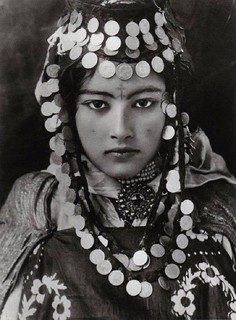 Harry Waterson writes:
Harry Waterson writes:
"Here is an exhibitor who should get Best of Show
at the next ANA."
Quite the fashionista... -Editor
OTTAWA RCNA CONVENTION JULY 20-24, 2022
After a COVID hiatus last year, the RCNA convention returns in-person for 2022. Here's the press release, which includes a number of educational presentations. -Editor
Members of the Royal Canadian Numismatic Association on their way to Ottawa for convention
Historically, members of the Royal Canadian Numismatic Association (RCNA) gathered in various Canadian cities for their annual convention. But COVID changed that. After skipping a year, in 2020, the RCNA held a virtual convention last year. Members will soon be heading to Ottawa, Ontario, the birthplace of the Association, for an in-person convention to be held from the 20 to the 24 July.
We are so happy to hold an in-person convention this year,
said Steve Woodland, president of the RCNA, We will finally be able see old friends, make new ones, and discuss our collections and our research while sharing a coffee or a meal.
Activities begin on the morning of Wednesday, July 20, with a Coin Grading Workshop given by Robert Forbes, followed, in the afternoon by a symposium during which renowned collectors will share their passion.
Bob Fritsch will start things off with a presentation entitled "A Short Tour of New England in Medals". He will be followed by Ottawa's own Jaime Flamenbaum, a.k.a. Mr. Twoonie, who will share how much fun you can have with Canada's bimetallic coin. Focus will shift to the hobby of coin collecting when Clifford Mishler will share his thoughts on what the hobby is building on for the future. Bill Waychison will close the day with a selection of the coins and medals of Susan Taylor.
The symposium continues on Thursday morning with another four presentations. David Bergeron, Curator of the National Currency Collection of the Bank of Canada's National Currency Collection who will discuss The Wonderful World of Spending and Saving.
He will be followed by Assistant Curator Krista Broeckx who will present the Images of Industry: The Bank of Canada's 1935 series.
François Rufiange will speak of Numismatics Under a Microscope
in the first presentation in French. Closing the morning will be Susan Taylor who will explore the concept of repurposing ideas and design elements as an environmental theme.
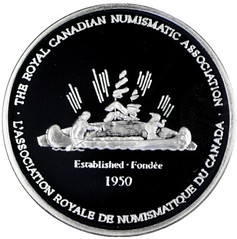 After a respite for lunch, Lloyd Chan will present
After a respite for lunch, Lloyd Chan will present All That Glitters: The Numismatics of Shakespeare.
An authority on the coins of India, John Deyell will explain how India's amazing numismatics could be considered alternative realities. He will be followed by Serge Pelletier who will offer the second French presentation and will speak of the numismatic offerings of the War of the Spanish Succession. The symposium will culminate with a presentation by Xianyao Li and Yannick Cormier, of the Royal Canadian Mint, who will speak on the Science Behind the Innovative Numismatic Coins.
The rest of the week will be filled with the normal fare: meetings of various numismatic organizations, exhibits, bourse, and an auction conducted by the Canadian Numismatic Company.
For more information: www.rcna.ca/2022
2022 ANA HENDELSON COLLECTION EXHIBIT
This press release describes material to be exhibited at the upcoming ANA World's Fair of Money®. -Editor
Described by researchers as one of the most important recent discoveries in
20th century American numismatics,
the unique Experimental Finish 1910 Saint-
Gaudens Double Eagle will be displayed alongside one of the two known Satin Finish
Proof 1921 Saint-Gaudens Double Eagles at the 2022 Chicago World's Fair of Money®.
It is the first time these multi-million-dollar coins will be publicly exhibited together.
The coins are being loaned to the American Numismatic Association by Brian Hendelson, president of Classic Coin Company of Bridgewater, New Jersey (www.ClassicCoinCompany.com) for the unprecedented exhibit in the convention's Museum Showcase area (booth #1927). The 2022 World's Fair of Money will be held August 16-20 in the Donald E. Stephens Convention Center in the Chicago suburb of Rosemont, Illinois.
Hendelson is also loaning his personal collection of 11 presidential appointment documents involving the United States Mint dating from 1792 to 1872. This also will be their first public display together. Each historic document was hand signed by the president making the appointment: George Washington, Thomas Jefferson, James Monroe, Andrew Jackson, Martin Van Buren, Franklin Pierce, Abraham Lincoln, or Ulysses S. Grant.
I love American history, and I'm delighted to let the public see these important
United States coins and documents. I don't know if these will ever be exhibited together
again, so this may be a once-in-a-lifetime opportunity to view this unique collection in
person,
said Hendelson.
Ten of the historic presidential appointment documents will be displayed in the Museum Showcase. An 11th document, President Washington's 1795 appointment of Elias Boudinot as the third Mint Director, will be exhibited at the Classic Coin Company booth (#1222) along with high-quality examples of first-year of issue coins struck during Boudinot's tenure at the Mint from 1795 to1805.
The lettered-edge 1910 Double Eagle, designed by acclaimed sculptor Augustus Saint-Gaudens, is graded PCGS SP66+ CAC. It is the only known example of this type of Experimental Finish with surfaces that are lighter and more reflective than Satin Finish proofs, and brighter than Matte Proofs of that era.
The 1921 Satin Finish Double Eagle is graded PCGS SP64+ and was discovered in 2006, a half dozen years after the first known example was discovered. No others have been reported. The Satin Finish was used on 1909 and 1910 Double Eagle proofs; however, experimental pieces with Satin Finishes from different years are now known, including the two from 1921.
The Brian Hendelson Collection of Presidential Appointment Documents in the Museum Showcase exhibit are:
- President George Washington's 1792 appointment of David Rittenhouse as first Mint Director. The document also is signed by Jefferson who was Secretary of State at the time;
- President Washington's 1795 appointment of Joseph Richardson as Mint Assayer;
- President Thomas Jefferson's 1806 appointment of Robert Patterson as the fourth Mint Director. It is also signed by James Madison who was Secretary of State at the time;
- President James Monroe's 1825 appointment of Samuel Moore as Director of the Philadelphia Mint;
- President Andrew Jackson's 1832 appointment of John Richardson as Mint Assayer;
- President Martin Van Buren's 1837 appointment of John R. Bolton as Director of the Charlotte Mint;
- President Franklin Pierce's 1853 appointment of John Newson as San Francisco Mint Melter and Refiner;
- President Abraham Lincoln's 1861 appointment of David Cheweseman as San Francisco Mint Treasurer;
- President Ulysses S. Grant's 1869 appointment of Oscar D. Munson as San Francisco Mint Assayer; and
- President Grant's 1872 appointment of Chauncy Noteware as Carson City Mint Director.
These are the first-year of issue coins that will be displayed at the Classic Coin Company booth with President Washington's 1795 appointment of Elias Boudinot as the third Mint Director:
- 1796 Draped Bust Quarter, PCGS MS63PL
- 1795 Flowing Hair Half Dollar, NGC MS63+
- 1795 Draped Bust Dollar, NGC MS64
- 1795 Draped Bust $5, NGC MS63+
- 1795 Draped Bust $10, PCGS MS62
1791 ACT AUTHORIZING THE U.S. MINT
Len Augsburger alerted me to another great piece of numismatic ephemera - a 1791 Act of Congress signed by Thomas Jefferson authorizing the creation of the U.S. Mint. It was sold yesterday by Heritage for $137,500.00 (including Buyer's Premium). -Editor
Secretary of State Thomas Jefferson signs Congressional Resolution authorizing the creation of the U.S. Mint
Thomas Jefferson. Act of Congress Signed ("Th: Jefferson") as Secretary of State. [Philadelphia: Printed by Francis Childs and John Swaine, 1791]. One page, printed broadside measuring 9.5 x 15 inches. Uncut folio sheet, creased along old folds, minor foxing, minor paper loss to upper left and lower right corners, not affecting text. Countersigned in type by George Washington (President of the United States), John Adams (Vice President, President of the Senate), and Frederick Augustus Muhlenberg (Speaker of the House).
"Resolved by the Senate and House of Representatives of the United States of America in Congress assembled, That a Mint shall be established under such regulations as shall be directed by law..."
"Congress of the United States: At the Third Session, Begun and held at the City of Philadelphia, on Monday the sixth of December, one thousand seven hundred and ninety. Resolved by the Senate and House of Representatives of the United States of America in Congress assembled, That a mint shall be established under such regulations as shall be directed by law. Resolved, That the President of the United States be, and he is hereby authorized to cause to be engaged, such principal artists as shall be necessary to carry the preceeding [sic] resolution into effect, and to stipulate the terms and conditions of their service, and also to cause to be procured such apparatus as shall be requisite for the same purpose. FREDERICK AUGUSTUS MUHLENBERG, Speaker of the House of Representatives. JOHN ADAMS, Vice-President of the United States, and President of the Senate. Approved, March the third, 1791. GEORGE WASHINGTON, President of the United States. Deposited among the Rolls in the Office of the Secretary of State." Signed, "Th: Jefferson."
Len adds:
"As I recall this resolution was passed at the very end of this congressional session, and then not seriously dealt with until the following Congress, before culminating in the April 1792 Mint Act."
To read the complete lot description, see:
Secretary of State Thomas Jefferson signs Congressional Resolution authorizing the creation of the U.S. Mint
(https://historical.ha.com/itm/autographs/thomas-jefferson-act-of-congress-signed-th-jefferson-as-secretary-of-state-philadelphia-printed-by-fran/a/6258-42014.s)
VOCABULARY TERM: KNUCKLE-JOINT PRESS
Here's another entry from Dick Johnson's Encyclopedia of Coin and Medal Terminology. -Editor
Knuckle-joint Press. A press whose action is based on a hinged joint and flywheel. This type of press has a relatively long extrusion dwell, particularly useful for preventing the springing back of the surface metal. This type of striking is ideal for both numismatic and medallic items, in fact more of the world's coins and medals have been struck on knuckle- joint presses than any other.
Coining presses. The first knuckle-joint press for coining, the Uhlhorn, was invented by Diedrich Uhlhorn in Germany in 1812 (and patented in 1817). This was intended to replace the screw press, which had been used for over 300 years (but was not until the end of the 19th century when knuckle-joint presses could be electrified with greater ease than screw presses that the screw press was ultimately phased out of any coining mint).
From the beginning Uhlhorn presses had automatic feed and delivery systems. It also incorporated the collar for forming the edge treatment of struck pieces, either smooth or reeded. Uhlhorn established a factory in Grevenbroich, Germany in 1817 for the purpose of building presses for minting coins and it continued in operation until at least 1880.
Although Uhlhorn was preceded by a hand cranked knuckle-joint press devised by Russian mintworker at the Saint Petersburg Mint, I.A. Nevedomskiy in 1811, his manually operated press was never placed into production. A drawing has survived however.
In 1836 the Uhlhorn press was modified by a Frenchman, who created the Thonnelier press, and mints of the world used either or both type presses for over 150 years and both are still in use. A toggle-action press was evolved from the knuckle-joint and all coining presses built after about 1860 are optional knuckle-joint or toggle-action mechanics. German and English firms have dominated the manufacture of these coining presses (but some coining presses have been made in America, Austria, Belgium and Sweden).
Knuckle-joint presses were originally powered by steam engines (infrequently by water power) until 1890. Thus steam engines (as Boulton and Watt's engines) were just as necessary for mints as Uhlhorn's coining presses. The power was transferred to the press by belting. After 1890 most all presses were electrified and driven by electric motors. America's Third Mint in Philadelphia built in 1901 became the first all-electric mint in the world; twelve Morgan & Orr knuckle-joint presses were moved from the old Second Mint to the new mint and electrified.
Medal presses. Presses for striking medals can be either knuckle-joint or hydraulic. The advantages of the knuckle-joint are a sharper blow, a longer extrusion dwell and higher production speeds. Hydraulic presses, while slower in production, can develop a more forceful "squeeze" displacing more surface metal with each press cycle making them more suitable for high relief multiple struck medals with fewer blows and intermediate annealing necessary.
Knuckle-joint is sometimes called knee-action. See presses and pressroom practice.
To read the complete entry on the Newman Numismatic Portal, see:
Knuckle-joint Press
(https://nnp.wustl.edu/library/dictionarydetail/516199)
DONALD G. PARTRICK (1926-2020)
American Numismatic Biographies author Pete Smith submitted this article on colonial coin collector Donald G. Partrick. Thanks! -Editor
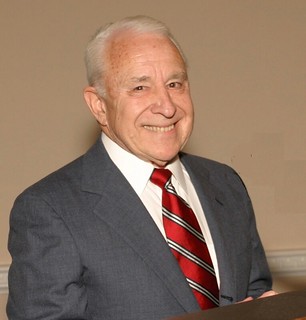 Readers of The E-Sylum may recall the mystery surrounding the death of Donald Partrick. No
obituary or death notice was published and there has been little biographical information
published about him. This is an attempt to correct that.
Readers of The E-Sylum may recall the mystery surrounding the death of Donald Partrick. No
obituary or death notice was published and there has been little biographical information
published about him. This is an attempt to correct that.
Donald Groves Partrick was born on January 6, 1926, the son of George F. (9/7/1889-7/1979) and Violet W. Partrick (1896-10/20/1952). His father was listed as an insurance broker or mortgage broker.
Partrick married Virginia Fickling (1/11/1924-1/2/2014), daughter of Walter J. Fickling of Hempstead, on December 8, 1951. His wife was a niece of Danton Walker (1889-1960), a syndicated New York City columnist. They were the parents of Douglas Partrick and Donald Partrick, Jr.
Partrick attended Poly Preparatory Country Day School in Brooklyn and McBurnie Institute in New York City. He graduated from Brown University at Providence, Rhode Island, in 1948. While in college he was a member of Delta Kappa Epsilon fraternity and a member of the Brown University Club.
Partrick was a building contractor servicing the post-war housing boom on Long Island. He was president of Donstan Building Corp. with his partner Stanley L. Neisloss. The company was also known as Donald Stanley Builders. In 1950 they were building 50 houses in the Syosset Hills development. In 1954 they were developing 100 houses at Pinewood Hills in Huntington, Long Island. In 1955 it was part of the 1500-unit Eastwood Village Colony in Centereach. In 1956 they were building 230 houses at St. James Estates.
They did several developments under the Heatherwood name. In 1958 they were working on the 400-unit Heatherwood at Huntington development. This included an 18-store shopping center. A second 2500-unit development was at Heatherwood Village North in 1962. In 1962 they did a 507-unit development of Heatherwood in Central Islip. In 1965 it was 270 homes at Heatherwood at Stony Brook.
In 1959, Partrick was vice president of the Long Island Home Builders Institute. He was the designer of houses in his developments. Construction was speeded with the use of modular building components.
They diversified to construct apartment buildings. In 1965 they began construction on 12 buildings with 192 apartment units at Heatherwood House on-the-Lake in Patchogue. In 1966 they planned to build another 800 private homes, 700 garden apartments and a shopping center. In 1966 the company received an award for their efforts that included 7000 homes, 1000 garden
apartments and several shopping centers since 1950. In 1990 Partrick was elected president of the Long Island Builders Institute. By that time, he was one of the largest owners of rental property in his area.
His hobbies included hunting and fishing. He established a wildlife preserve in upstate New York. At the same time, he had conflicts with preservationists over building projects on undeveloped land on Long Island.
On November 12, 1974, Stack's offered at auction The Donald Groves Collection of Colonial
Coins and an Additional Consignments of United States Coins.
The catalog did not include a
biography of the consignor. It is now known that the coins were duplicates from Partrick.
Many coins have a pedigree that traces back to Donald Partrick. In some cases this was the name he used in numismatics. Later sales were conducted under the name of Donald Groves Partrick.
Partrick joined the American Numismatic Society in 1969, became a fellow in 1987, joined the board of trustees in 1990 and served as president from 1999 to 2007. He was an important donor and driving force behind the move of ANS to a new building. He was a life member of the ANA and received a Presidential Award in 1999.
In April of 1984, an anonymous donor contributed funds to the ANS to establish the Donald Groves Fund to support research in early American numismatics. It was on December 2, 1984, that I met Don Partrick as he made a presentation at the 1984 ANS Coinage of the Americas Conference.
In 2004, the American Numismatic Society issued a medal to commemorate their move to a new building. The obverse had a bust of Donald G. Partrick but he is not named. In the background is the Donald Groves Building, also not named. The gold medal was presented to Partrick on October 23, 2004.
Partrick put together the finest cabinet of colonial coins ever assembled. On January 8, 2015,
Heritage conducted the first auction of the Donald G. Partrick Collection featuring a dozen 1792
patterns. Three additional sales were planned. Heritage offered a statement on June 10. Heritage
Auctions has placed on hold the 2nd , 3rd and 4th Donald G. Partrick Collection Auctions at the
request of Mr. Partrick's family.
Partrick died on April 9, 2020. An elaborate headstone marks the grave at Huntington Rural Cemetery in Long Island, New York.
I found the listing of Heritage sales confusing. The Internet sales are not on NNP. This is my best attempt to list them.
- Colonials and 1792 patterns, Signature sale #3216, January 7-12, 2015.
- Connecticut Coppers, Internet Sale #63160, Oct 2-Nov 1, 2020.
- Hard Times and Merchant Tokens, Internet Sale #63161, Nov 7-Dec 6, 2020.
- Brasher Doubloons, FUN Show Platinum Night #1326, January 21, 2021.
- New Jersey Coppers, Signature Sale #1330, Session 2, March 17-18, 2021.
-
Continental
Dollar,
Platinum Night, #1329, April 22-23, 2021. - Civil War Merchant Tokens, Internet Sale #63163, Apr 30-May 30, 2021.
- Additional Selections, Internet Sale #63165, May 30-Jun 27, 2021.
Virginia Partrick was a volunteer at Huntington Hospital for 30 years and put in more than 47,000 volunteer hours during that time. She also served on the board of trustees. Donald gave the hospital 2.4 million dollars. Following his death, Douglas donated an additional million dollars. Douglas remains president of Heatherwood Communities and owns the Heatherwood Golf Course. Donald G. Partrick, Jr. also worked in the family business.
To read earlier E-Sylum articles, see:
HERITAGE TO OFFER DON PARTRICK COLONIAL COLLECTION
(https://www.coinbooks.org/esylum_v17n45a20.html)
DONALD G. PARTRICK (1926-2020)
(https://www.coinbooks.org/v23/esylum_v23n33a10.html)
DONALD G. PARTRICK COLLECTION SALES ANNOUNCED
(https://www.coinbooks.org/v23/esylum_v23n33a20.html)
MORE ON DONALD GROVES PARTRICK
(https://www.coinbooks.org/v23/esylum_v23n34a11.html)
THE ZABRISKIE LEGACY
Although the primary coin collection of Capt. Andrew Zabriskie was sold by Henry Chapman, another sale took place at a much later date as discussed in The E-Sylum last year. The July 1999 issue of The Rail Splitter has a cover article by Donald Ackerman titled "The Zabriskie Legacy" with a sidebar article by David E. Tripp. With permission, we're republishing these here. -Editor
THE ZABRISKIE LEGACY
Donald L. Ackerman
Few collectors of political Americana know the name Andrew C. Zabriskie. But numismatists (coin collectors) are more than familiar with that moniker —- and, more importantly, what it represents in the way of provenance. Zabriskie was one of the most prominent collectors of American coinage in the late-nineteenth and early twentieth centuries. In fact, Zabriskie served as President of the American Numismatic Society at the turn-of-the-century. The sale of his collection by Henry Chapman in 1909 is considered, even today, a seminal event.
Ancient history... why then, should today's Lincoln collector be concerned with him? For one thing, he amassed what will always be considered the single finest assemblage of Lincoln tokens, medals, and political badges. Second, in 1873, at the age of nineteen, he published — at his own expense — the very first catalog devoted
exclusively to Lincoln medals: A Descriptive Catalogue of the
Political and Memorial Medals Struck in Honor of Abraham
Lincoln, Sixteenth President of the United States. A total of 187
medals (including metal varieties) were each assigned a number
(a Zabriskie
number). The sequence was based on descending
order of size, with measurements in the American scale
prevalent at the time. Only seventy-five copies were printed, each selling for $1.50. (A flawed copy of this scarce work recently sold in
the Harry Bass sale for $300).
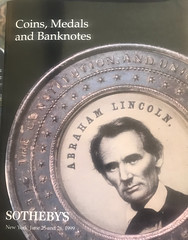 Until earlier this year, no one outside the immediate family knew that Captain Zabriskie's collection (he
was quite proud of his military rank) of
Lincolniana still existed. A good deal sold in the
Chapman sale. Even more was gifted to the
American Numismatic Society in Manhattan
where it remains in their permanent collection.
But a
Until earlier this year, no one outside the immediate family knew that Captain Zabriskie's collection (he
was quite proud of his military rank) of
Lincolniana still existed. A good deal sold in the
Chapman sale. Even more was gifted to the
American Numismatic Society in Manhattan
where it remains in their permanent collection.
But a core collection
sat sight-unseen in a box
in a safe from the time of Zabriskie's death in
1916 until rediscovered by family members in
1951. For reasons unknown, this blockbuster
discovery was relegated to a closet shelf for an
additional forty-eight years. Like the Paul
Masson wine ad of years ago (No wine before
its time
) — No collection before its time
— family members arranged a house call with
Sotheby's coin department and, with seeming
nonchalance, consigned the collection for a sale.
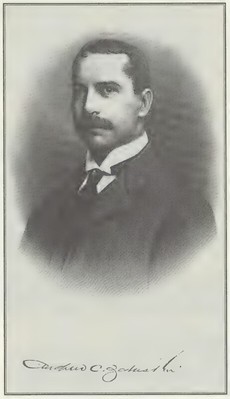 The idea of a numismatist collecting political
items may now seem strange, but this was not
always the case. Virgil Brand, a millionaire
Chicago brewer, actively collected from the late
1870's through the first two decades of the next
century. Not without cause, he became known as
The idea of a numismatist collecting political
items may now seem strange, but this was not
always the case. Virgil Brand, a millionaire
Chicago brewer, actively collected from the late
1870's through the first two decades of the next
century. Not without cause, he became known as
the world's greatest coin collector.
The collection remained intact until fairly recently and,
when cataloged, was found to contain a total of 365,000 items. The
last installments of his collection, auctioned by Bowers & Merena
in 1990, included a modest assortment of election medals; the
majority represented the 1860 and ‘64 campaigns of Abraham
Lincoln. The world's greatest political collector,
J. Doyle DeWitt,
had deep roots in the numismatic community and, prior to publishing his own work on politicals, wrote several articles for leading numismatic journals. And it used to be the case that coin
shows were considered productive sources for political items.
With the demise of many of the old-time dealers, this is now seldom the case. Still, many items in the political series (hard times
tokens, Civil War tokens, inaugural medals) have found a devoted
following among segments of the coin collecting population.
The symbiotic cord between coin collecting and political
collecting has its antecedents in the mid-nineteenth century.
Prior to the introduction of the photographic campaign badge in
1860, practically all campaign buttons
were, in fact, tokens and
medals. Just as silent movies reached their zenith as an art form
concurrent with the introduction of talkies,
so did campaign
medals reach a golden age
just as the more popular ferrotype
made its first appearance. From an artistic perspective, the
medals produced from 1856 to 1868 are unsurpassed. But medals continued to be popular for quite a number of years —
large quantities were produced through the election of 1892 with
examples of high artistic merit most often produced by veteran
engravers from the ‘60's. The introduction of the celluloid pinback button (our modern campaign button
) in 1896 was too
much to bear, and put the final nail in the election-medal coffin.
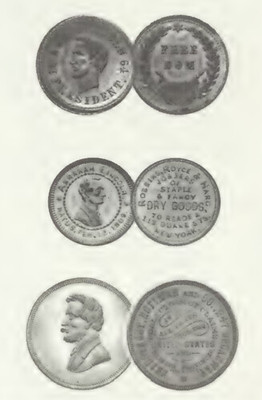 The greatest interest in the political series by coin collectors took place around the time of the Civil War. The first catalog
of election medals was published in 1858: Charles I. Bushnell's
An Arrangement of Tradesmen's Cards, Political Tokens, Also
Election Medals, & c. Current in the United States of America for
the Last Sixty Years. This was followed in 1862
by Alfred H. Satterlee's An Arrangement of
Medals and Tokens, Struck in Honor of the
Presidents of the United States, And of the
Presidential Candidates From the Administration
of John Adams to That of Abraham Lincoln. This
compendium contained twenty-six Lincoln
medals. The Bushnell collection was sold by
Henry Chapman in 1882. The Satterlee collection was sold by W. Elliot Woodward in 1862.
The greatest interest in the political series by coin collectors took place around the time of the Civil War. The first catalog
of election medals was published in 1858: Charles I. Bushnell's
An Arrangement of Tradesmen's Cards, Political Tokens, Also
Election Medals, & c. Current in the United States of America for
the Last Sixty Years. This was followed in 1862
by Alfred H. Satterlee's An Arrangement of
Medals and Tokens, Struck in Honor of the
Presidents of the United States, And of the
Presidential Candidates From the Administration
of John Adams to That of Abraham Lincoln. This
compendium contained twenty-six Lincoln
medals. The Bushnell collection was sold by
Henry Chapman in 1882. The Satterlee collection was sold by W. Elliot Woodward in 1862.
Although most coin collectors profess an
interest in history, most are content to discover history through coins alone - politicals
are hardly worth the study. (Perhaps politicians are not deemed worthy of their attention.) But this was certainly not the case with
Zabriskie. In his 1897 lecture entitled United
States History As Illustrated by Its Political
Medals,
Zabriskie explained his philosophy:
As is well known, the fear of possible monarchical tendencies, in the days preceding the adoption of the Federal Constitution, prevented the use of any head, except that of the Goddess of Liberty, on regular issues of the coins of the United States. Looking back as we do, through a vista of more than one hundred years, it seems a pity that this phantom prevented the placing the bust of each President on the coins issued during his administration. This would have added an interest to the numismatic history of our country almost impossible to overestimate. We have, however, a series which in a degree can serve to make up this lack, and which in some respects is even more interesting than would have been a series of coins of the United States bearing the busts of the presidents. The series of coins bearing the busts of the presidents would delineate those candidates who were successfully chosen to rule over this country. The political series on the other hand not only delineates these successful candidates, but also shows us the features of those who strove in vain for the highest office within the gift of the republic.
The seeds of the Captain's fascination with the contemporary political scene were defined by specific memories:
I can distinctly recollect, as a boy, playing with a small American flag which had stamped across it the words ‘Clay and Frelinghuysen.' It was the sole surviving specimen of a number which had waved from my grandfather's house at 618 Broadway, when the great campaign procession took place... My own personal reminiscences of Mr. Lincoln are of the briefest character. I remember, as a boy of seven, seeing him as he was escorted through this city [New York] on his way to Washington for his inauguration, and recall my surprise that so many persons should crowd the streets to see this unassuming man drive by in a barouche, and whose only escort consisted of a few policemen and committeemen in carriages. With boyish recollections of the splendors accorded in their reception to the Japanese Embassy and the Prince of Wales in the previous year, my wonder is perhaps quite excusable. I remember four years later how, with awe-struck face, I watched the slow progress up Fifth Avenue of that solemn funeral car drawn by sixteen somber steeds and surrounded by the gray files of the Seventh Regiment.
Years later, Zabriskie would speculate on the popularity of collecting political medals:
In the year 1857 the United States government abolished the old copper cent and substituted the small nickel cent. This event had a very important bearing on American Numismatics; up to that time collectors of coins and medals had indeed been very few in number and societies devoted to the study of the science were entirely unknown in this country. It seems, however, to have occurred to a number of persons that the old copper cents were interesting, that a complete set of them would be a valuable thing to possess, and consequently, many started to collect sets of cents and half cents, as the half cent, which had been issued from time to time up to this year, had been abolished also. Many of these collectors, starting in a modest way, soon increased the field of their labors and gathered specimens of coins and medals of all countries. Naturally the interesting series of political medals attracted their attention...
Just why Zabriskie was attracted to collecting Lincoln is uncertain. The tumultuous
events of the Civil War, to which he was an
impressionable witness, were, no doubt, fertile
ground. Current events often hold the greatest
attraction for a beginning collector.
Affordability and availability may have been
other concerns. Accordingly, he came out with
his Descriptive Catalogue...
in 1873, devoted
exclusively to Lincoln. In 1897, he declared,
Far be it from me to weary you with a dry catalogue of all the various medals of which I
might speak. Such a catalogue comprising a full
description of the campaign medals of the
United States is greatly to be desired and
doubtless may at some future time be forthcoming...
(It would finally come about in 1959
with the publication of J. Doyle DeWitt's A
Century of Campaign Buttons). In 1873, however, Lincoln was his exclusive focus.
The preface to his inaugural work was
simple and direct: In the following pages will
be found descriptions of one hundred and
eighty-nine Medals struck in honor of
Abraham Lincoln. No President or public man
in this country — Washington excepted — has been honored with
an equal number of medallic memorials. I believe very few
pieces have escaped my observation, and they are probably
those known as ‘mules.' The infamous practice of muling, at one
time carried to a great extent, tends to confuse any one attempting to catalogue political pieces. Those individuals who urge diecutters to strike them, can be looked upon with contempt by any
true student of Numismatics. I am indebted to the late Mr. A. H.
Satterlee's work on ‘Presidential Medals' for descriptions of
some of the earlier politicals. Also, to several gentlemen, who
furnished me with rubbings and information on the subject.
For those unfamiliar with the term, muling
refers to the
practice of combining obverse and reverse dies that did not originate together, thus creating a new variety of
medal. In spite of his aversion to mulings,
several are listed in Zabriskie's catalog. In
addition, medals struck strictly for the purpose of selling to collectors are likewise listed - and are not differentiated as such. It is
quite possible that Zabriskie did not find
these equally objectionable to mules that
often contained totally illogical and incongruent dies.
One result of the catalog's publication
was a controversy between the author and a
Cambridge, Massachusetts collector named
Henry W. Holland. They traded barbs in a
series of Letters to the Editor
that
appeared in the American Journal of
Numismatics in 1874 and 1875. Holland's stated goal was the compilation of a complete
list of Lincoln medals — as such, it was necessary to deliver some criticism of Zabriskie:
Those of your readers who have had
occasion to consult Zabriskie's Catalogue of
Lincoln Medals, have probably noticed that it
contains some errors... I give below a list of
one hundred and ten Lincoln medals not in
Zabriskie... The mischievous practice of muling seems to have been carried to a greater extent than ever before.
Zabriskie responded: In the January
issue of the Journal appears a communication from H. W. H., in which my ‘Catalogue of
Lincoln Medals' is the subject of considerable
criticism... He mentions as new varieties in
metals some half-dozen medals in
bronze, which I had already catalogued as
copper. All collectors know that these pieces
are identical. Mr. H. W. H. proceeds to swell
farther his list by placing in the category of
medals sundry pieces made from terra cotta,
rubber, green clay, & c. These articles have no
right to the title of medals, and I purposely
excluded all such from my catalogue. I have a
Lincoln piece made from soap, which has as
much right in the list as the articles just mentioned!
But Holland got the last word: Allow me to express my regret that the list of Lincoln Medals sent you should have so much annoyed Mr.
Zabriskie... I am compelled to differ with him when he says that
impressions from medal dies in terra cotta, rubber, & c. ‘have no
right to the title of medals.' Such pieces are usually classed with
medals and rarely, if ever, described by any other term: and when
Mr. Zabriskie's collection is sold, I feel little doubt that even his
Lincoln ‘article' (as he calls it) in soap, will be classed with the
other Lincoln Medals, rather than with the snuff-boxes and stuffed
birds, that under the name of ‘miscellaneous articles' may close his
catalogue.
Zabriskie's article
in soap no longer exists and was not
included in the Sotheby's auction. Don't expect any snuff boxes or
stuffed birds, either. Holland's passing and the sale of his collection
in 1878 by W. Elliot Woodward put an end to the controversy.
(There are certain advantages to dying after your adversaries.)
Zabriskie never put out a revised catalog. The quest for a definitive,
complete listing would finally be realized with the publication of
Robert P. King's Lincoln in Numismatics
which appeared serially in The Numismatist issues of February 1924, April 1927, and August
1933. In the preface to his work, King reminisced about Zabriskie:
I do not know of anyone quite measuring up to Capt. Andrew C. Zabriskie as a thoroughly kind and courteous gentleman, and I do not believe that I ever destroyed one of his letters, which were a great help to me in those days, as his collection was particularly strong in contemporaneous pieces, having been collected by him at time of issue or shortly after. During the early days of our acquaintance he presented me with a copy of his Lincoln Medal Catalog, the earliest of this kind and now quite rare, having an auction record of about $15. I have besides this many items in my collection presented me by him, medals as well as other things that somehow seem to appeal to a Lincoln collector's heart - photos, badges, etc., among the latter being a beautiful silk woven ribbon by Dreyfus, of Basle, Switzerland, which I value very highly.
Zabriskie spent his remaining years writing papers and delivering lectures on diverse topics, often returning to his first love -
election medals and Lincoln. Comments made in his paper The
Medallic History of Abraham Lincoln,
delivered before the
American Numismatic Society on December 6, 1900, are worthy
of our attention:
...In speaking to-night upon the Medallic Memorials of Abraham Lincoln, I am, as it were, opening to you one of the side galleries in the life of that great man, and am not guilty of the presumption of attempting to lead your steps along the well-known paths of his life, already made so familiar to you by the many excellent biographies that have appeared from time to time ... varying in value from what may be pronounced excellent and readable, to the somewhat scurrilous vaporings of Mrs. Lincoln's colored waiting-maid... Months before the action of the convention was known, the Republicans had begun the formation of the Wide Awake organization which proved such an important factor in the campaign ... In the hats of some of these campaign clubs was worn a tin badge [DeWitt AL1860-1], bearing a hideous likeness of Mr. Lincoln. These are now rare, and how I came to possess this one may be worth relating.
Perhaps twenty years ago, seeing it catalogued for sale at auction, I sent a bid of two dollars for it, and afterwards was astounded to hear that it had sold for forty-two dollars. Some years later the purchaser sold it with his collection, and when I repeated my modest bid of two dollars my patience was rewarded by securing it for the small sum of one dollar and twenty-five cents. And here is a badge which I, as a boy of eleven, wore during the fall of 1864. Little campaigning was done, and the Wide Awakes had disappeared, but such campaign organizations as were formed were known as War Eagles... My task is finished... Like shells which strew the beach after the retreating tide, these little pieces of tin, or copper, or silver are left to us to mark the career of Abraham Lincoln.
And we, the collectors of today, have people like Andrew
Zabriskie to thank for his research, dedication, and diligence in
preserving these shells
from the sands of time. His legacy is
inspiring.
For more information on The Rail Splitter, see:
https://www.railsplitter.com/
To read the earlier E-Sylum article, see:
MORE ON THE ZABRISKIE COLLECTION
(https://www.coinbooks.org/v24/esylum_v24n29a09.html)
REDISCOVERING THE ZABRISKIE COLLECTION
The July 1999 issue of The Rail Splitter has a sidebar article by David E. Tripp about the 1999 discovery and sale of important remnants of the Andrew Zabriskie collection. With permission, we're republishing these here. -Editor
David E. Tripp, Special Consultant and former Director of Sotheby's Coin Department, cataloged the Zabriskie holdings. We asked him to recount how he personally "rediscovered" the whereabouts of that collection.
In early January of this year, I received a call from an old acquaintance with whom I had worked years ago, and for whom I had recently given some informal advice on a completely unconnected issue. She informed me that her father had recently died, and that her mother had inherited a collection of medals relating to Abraham Lincoln. Would I be able to go and have a look and give her mother some idea of what the materials might be worth. Needless to say, I was more than happy to do what I could.
"Oh, by the way," she asked, "have you ever heard of Andrew Zabriskie?" That stopped me. Of course, to a numismatist Captain Andrew C. Zabriskie's collections of coins, sold by Henry Chapman in 1909, was one of the greatest cabinets of American coins to ever come to auction. It included an example of America's most famous coin, the Brasher Doubloon. (Ironically that piece recently changed hands for nearly $1,000,000, and at Sotheby's a few years earlier, as part of the Bloomfield Foundation Collection, we had sold another coin from Zabriskie/Chapman for $165,000). Chapman was a landmark sale.
Over the weekend I looked at a tattered old copy of the Chapman sale catalog which I own, and noticed that while there was a great deal of political material, there was little if any material related to Lincoln. His Indian Peace Medals were virtually complete...less Lincoln. In checking the Lincoln Bibliography, I notice that he had published on the subject in 1873, and so was intrigued. I confess I had no idea that Captain Zabriskie was one of the early titans of collecting politicals, as well as coins.
The collection was laid out in a few shoe-boxes. Many pieces were simply wrapped in tissue paper. Some had at some point been slipped into old plastic sleeves. As each piece emerged from its cocoon, the importance of the holding began to reveal itself. Certainly when the Lincoln Peace Medal was unwrapped, I was astounded. It was the most perfectly preserved Lincoln I had ever seen (and I have been reliably informed that it may well be the single most perfectly preserved Indian Peace Medal of any president). Even uneducated in the secrets of the politicals market, the array of 35 ferrotypes was memorable.
As the extent of the collection became apparent, I idly asked if there was any more. Indeed there was, in the upstairs closet, in a suitcase. This, upon retrieval, contained many of the storecards from New York was well as the extraordinary run of Civil War tokens. In the end, the owner, a delightful lady, simply instructed us to take it away. As it was being receipted, I asked about how it had been retained intact for all these years.
It transpired, that in 1951, the family gave Captain Zabriskie's home, Blithewood, together with 1,000 acres to Bard College, up the Hudson River. The weekend before the closing, the husband of our consignor (Zabriskie's grandson) received a call from his brother, and was told that the closing was to be the following Monday, and that if there was anything in the house he wanted, to come up on Saturday and take it away. They went up to Blithewood and discovered the long-forgotten family safe, door sealed, combination unknown. They were confident that nothing of value remained in their grandfather's old safe, but decided at the last minute to have it drilled to make certain that personal, family papers were not left behind. To everyone's amazement, within was the collection, not only of Lincoln medals and storecards, but also the Captain's collection of Polish coins, which the family later donated to the Smithsonian Institution.
While I had some idea of what we were into, the size and importance of the collection was a most pleasant surprise. When we had got it all into some order, several specialists came to have a look. I was delighted that their reaction was similar to mine. As some of the great rarities came to light it was as if they were gazing on the Grail. A delightful experience indeed.
The Zabriskie holding is the rare survival of a wonderful "first generation" collection, and one can rest assured that the new owners will derive as much pleasure from their new purchases as did the Captain more than a century ago.
MEANTIME, AT THE AUCTION...
They began arriving an hour before the sale. A small group
of dealers gathered in a corner, speaking in sentences inaudible
to those seated only a few feet away. Within a few minutes, a
Sotheby employee gave the signal that bidders could go upstairs
and register. Passing by rows of European
paintings stacked at all angles in preparation for an upcoming sale, the
communicants slowly made
their way towards the registration desk. This was the
auction; many bidders
were making a weekend
of it attending the first two
sessions the previous day.
Past a narrow corridor lay
the main sales room. The scene was a familiar one, comprised of
neatly-arranged rows of folding chairs, banks of telephones, and
a pulpit-like auctioneer's podium. Draperies
were drawn around the sides and rear of the
staging area, creating a private enclosure
void of distractions. An electronic display board was operating with instantaneous displays of the current high bid
for each lot, along with foreign exchange
conversions in most major currencies.
The board, and its unseen master controller, sometimes would fall in arrears. This
was brought to the attention of auctioneer David Redden who
discounted the glitch, wryly commenting that we all speak
English here.
After a great deal of anticipation, the
Zabriskie Sale
began. Those attending
made up what is considered a large
audience for a coin sale... only thirty-five people. Not all would participate as bidders.
Some were companions. There were individual collectors, dealers, agents, and consultants. While many people worked to bring
this event to fruition, the person most
responsible was an elderly lady in a blue
sweater - the consignor of the Zabriskie
Collection. She was accompanied by her
daughter and nephew.
A composite of the audience: an elderly
man and his grandson who apparently did not
do any bidding; a gentleman who was bidding as agent
for Q. David Bowers; Seth Kaller; the big guy
from
Tannenbaum & Rossi Numismatics (we can never remember
who is Tannenbaum and who is Rossi!); noted numismatist
Harvey Stack; collector Saul Finkelstein; former Congressman
Jimmy Hayes and his dealer-consultant Anthony Terranova;
dealer Bill Anton; Mike Hodder (a Stack's associate who was bidding as agent for four collector-clients); and various others who
tried to get their paddles in the air when the heavy-hitters
weren't going full tilt. The hidden audience
was comprised of
countless unknown absentee bidders who submitted their offers
in advance, and the equally inscrutable and anonymous live telephone bidders.
Even though it came as no surprise, the strong across-the-board prices were bewildering to several seasoned collectors.
The blockbusters lived up to their advance-billing. The perpetual calendar sold to an absentee bidder for $35,000 plus ten-percent buyer's commission, a record for a ferrotype portrait
Lincoln campaign badge. Auctioneer Redden disclosed he had
four absentee bids at the $11,000 level. The Lincoln-Hamlin
doughnut which one collector disparaged because it lacked its
suspension loop, sold to someone more discerning for $10,000.
The largest size Lincoln ferro from 1864, which a savvy dealer
thought to only take to the $3,500 level, soared to an astounding
$17,000. Considered one of the choicest examples of an Indian
Peace Medal extant, the Lincoln specimen in silver went within
estimate at $24,000 - quite a surprise given how few items went
at anything near the estimates. The Wide Awake hat badge, the
star of the sale,
attracted a winning bid of $11,000. One can
only imagine what it would have realized if the disfiguring tarnish was not present. The only other specimen we know of (cataloged as Sullivan/DeWitt #1) was stumbled
across in a Civil War show by a lucky-and
astute - Wisconsin politicals collector. A
Major Robert Anderson-Fort Sumter
award medal in silver, one of only
two known, was hammered down for $20,000 (the underbidder made the rather unsportsmanlike comment - at a very audible level - What's he going to do
with it?
).
The George F. Robinson
Life Saving Award medal in silver,
given to the hero who thwarted the
assassination of Sec. Seward the night of the Lincoln murder,
also one of only two known, was less appreciated at $13,000.
Proving time and again that provenance and the Zabriskie name
carried huge cachet value, the Rail Splitter Progress medal in copper sold for $2,250
— despite a comparable example selling in Joe Levine's sale of the
McSorley collection last year for a
healthy $400. A Lincoln-axe brooch
made the cut
for $3,250 (this is
only the fifth appearance of an
authentic example in the past
twenty-five years).
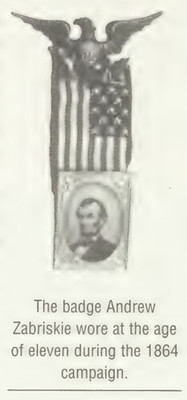 The 1864
campaign badge that Captain
Zabriskie
The 1864
campaign badge that Captain
Zabriskie wore as a young
boy of eleven
evoked a winning bid of $5,500. Although
a pristine specimen, it is
typical of badges that routinely sell for $800-1,000 in the
political market.
It appeared that five players
won 90% of the lots. The four major buyers in attendance were
the agent for David Bowers, Hodder,
Hayes/Terranova, and Tannenbaum
& Rossi, who had their own private
phone line in a box seat enclosure.
An unidentified phone bidder was likewise a major purchaser.
Tannenbaum & Rossi was overheard to
say We bought a lot of stuff for ourselves ... for inventory.
Mike
Hodder indicated he was buying as agent for collectors interested in political material, not coin collectors per se, and that the Zabriskie
provenance was not a factor in their
buying decisions. He further stated
that, although prices were strong,
..we're happy with what we bought.
This is a unique opportunity. By not
buying now, we will just wind up paying more at the next sale.
At sale's end, the consignor
exclaimed We're delighted!
She
expressed pleasure that the items in
the Zabriskie Collection will go to appreciative collectors, and not reside in a museum. The three-session sale netted $2.5 million which, even by
Sotheby standards, constitutes a success. It was a memorable event, never to be duplicated.
Steve Tannenbaum's partner was Richard Rossa ("the big guy") - see the earlier article for more information. -Editor
For more information on The Rail Splitter, see:
https://www.railsplitter.com/
To read earlier E-Sylum articles, see:
RICHARD ROSSA 1943-2013
(https://www.coinbooks.org/esylum_v16n20a02.html)
MORE ON THE ZABRISKIE COLLECTION
(https://www.coinbooks.org/v24/esylum_v24n29a09.html)
FRED WEINBERG INTERVIEW, PART TWO
Published in Errorscope earlier this year, Greg Bennick's interview with dealer and longtime E-Sylum supporter Fred Weinberg is a wonderful look at the hobby and business of error coin collecting over the last half century. With permission from the Combined Organization of Numismatic Error Collectors of America (CONECA), we're republishing it here. Here's part two of four, where Fred discusses some of the famous error collectors and dealers he's known. -Editor
Greg Bennick: Wow, what do you remember about him? I think most people only know his name...and his effect.
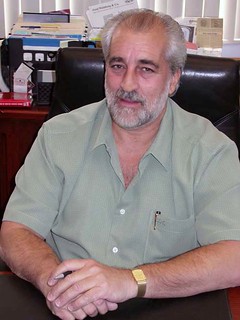 Fred Weinberg: You know what, Mort Goodman once told me his first name and I forgot it. I believe he only
went by Blakesley, because he didn't like his first name. Whether it was Reginald or something corny-sounding, I'm not sure, but he was known as Blakesley. He was very tall and lanky, balding. I can picture him
like I saw him yesterday. He was very soft spoken, very analytical and he's the one that noticed the weakness
of the rim on most clips opposite the clip that's become known as The Blakesley Effect. But he also diagnosed
and wrote about in great detail the other two methods of authenticating clipped planchets, which is number
one, the metal flow towards the clip, and number two, what we call the cut and tear marks, which you can see
on a curved clip and a straight end clip. You won't see these on a ragged or end of sheet clip.
Fred Weinberg: You know what, Mort Goodman once told me his first name and I forgot it. I believe he only
went by Blakesley, because he didn't like his first name. Whether it was Reginald or something corny-sounding, I'm not sure, but he was known as Blakesley. He was very tall and lanky, balding. I can picture him
like I saw him yesterday. He was very soft spoken, very analytical and he's the one that noticed the weakness
of the rim on most clips opposite the clip that's become known as The Blakesley Effect. But he also diagnosed
and wrote about in great detail the other two methods of authenticating clipped planchets, which is number
one, the metal flow towards the clip, and number two, what we call the cut and tear marks, which you can see
on a curved clip and a straight end clip. You won't see these on a ragged or end of sheet clip.
I can remember the diagrams he drew of the planchet going through the upsetting mill and why with the lack of metal at this point it would cause a weakness in the rim opposite to that, because there wasn't enough corresponding pressure. So it was fascinating because people had noticed this effect, but nobody had put two and two together until Blakesley had written his papers. It opened up methods of authentication for the common coin collector to be able to authenticate their own coins anywhere in the country which they'd found without having to send those pieces into Collector's Clearinghouse.
Greg Bennick: So fascinating! My dad tells stories of finding errors in change in the 1950's. And that when he was finding clipped planchets and also laminations, that he didn't know what to do with him. He said he had bags of them and eventually just spent them because they weren't worth anything. At the time, is that where most people were finding their errors, their double strikes, and slightly more even major errors at the time? Were people pulling them out of change?
Fred Weinberg: I can tell you, believe it or not, that in 1967, ‘68, ‘69, there were not a lot of major off center or even double struck Lincoln pennies around. And if you look today at dates in the 1950s and ‘60s, you'll see that they're kind of scarce. Yeah, there might have been more after 1965 when they took out silver from our coins and started ramping up production in higher mintage figures. This produced a few more errors, but we rarely saw very expensive or rare error coins at all at the club meetings. At the Error-A-Ramas people would exhibit, so you'd see some great examples like a clock of off-center buffalo nickels, or a clock of double struck pennies. But at the regular monthly meetings it was things that most people found, which would have been - like you said - clips, laminations, die cracks and those sorts of things. I had a little mail order business when I was probably 15, 16 selling BIE's and die cracks for 15, 20, and 30 cents apiece plus a few postage stamps.
That was my first actual dealing in coins as a business, and it was fairly successful. You can't get rich selling coins for 25 cents apiece, but you meet a lot of friends and learn a lot that way.
Greg Bennick: So, you've mentioned that first Error-A-Rama, June 1967. What do you remember about that first error convention? That must have been really exciting!
Fred Weinberg: Well to be honest, it was actually the weekend before my high school graduation and prom night, and I made sure I had enough money for a corsage for my date and that was it! I saved the rest of my money to spend the following week at the Error-A-Rama in Hollywood. The show was put on by Mort Goodman, who I consider one of the grandfathers of the error hobby. Mort and other people were starting to get a club together in Hollywood. Error-A-Rama was at this beautiful hotel, and they had a room with bourse tables, and showcases and everything. There were dealers that I had just read about or seen their ads in the NECA - it was NECA at the time, not CONECA - the NECA Errorscope. I would see names of people I recognized and got to meet them in person. A lot of them became members of the Error Club of Hollywood, but some people had flown from back east. It was the first time I ever met Arnie Margolis who came in from New York. There was also a gentleman there named Philip Spier from the south who had an incredible collection of coins.
You know, it really wasn't until I bought in 1974, the Bolt collection, the Dr. Conway Bolt collection of errors, that I realized that there were very few collectors that understood or had any interest in error coins in the 1930s, ‘40s and ‘50s. It picked up a little bit probably in the mid to late ‘50s to some degree. But Mort and Arnie really got it going in the mid 1960s. That was what I would call, the first new wave of error collecting. It was because of Mort and Arnie and the club and NECA in the mid 1960s.
Greg Bennick: And do you think that upswing was caused by them spreading education about the minting process, or was it info about particularly interesting error types?
Fred Weinberg: It was both of those things. Mort, just before I met him at the Error Club of Hollywood, literally drove around the United States during 1965 and 1966 giving coin club talks about the minting process and about error coins to any club in the country that would listen to him. He had this old two door car and drove it all over the country with his wife Jane, and they gave talks on the minting process. That motivated a lot of people. I think when Mort saw how interested people were to come to these meetings, that's when he started thinking about maybe an Error Club up in Hollywood, and the Error-A-Rama. They got going around the same time.
Greg Bennick: I remember hearing about Mort Goodman driving around the country. I think it was something you mentioned to me at a coin show. But hearing you describe it in that way is so astounding, because that truly is groundbreaking, especially at that time. It's sort of like The Red Book and Jack Kerouac all in one.
Fred Weinberg: That's very good! You're right. And Arnie was the one who came up with the graphics. If you look around in older issues of error magazines, there was something called Margood, which was Margolis and Goodman. They came up with a little company where you could get a picture of a Lincoln penny on a two-by- two piece of cardboard. Arnie did most of the printing, And the hole, instead of being in the center was off to the left, or to the right, and there was a diagram of a penny. You could staple the coin into that two-by-two holder and then draw on the diagram of Lincoln where the BIE was, where the die crack was, where the lamination was, and so on. That was ground breaking. It was pretty popular for a couple of years, though it lost interest over time.
But Arnie and Mort, were from both extremes across the country and they were good friends. You had Arnie in New York and Mort here in California. They were without a doubt the two people who most motivated me. Probably 80%, if not 90% of the coin collectors back in the 1960s who ended up collecting errors, were motivated and inspired by them as well.
Greg Bennick: That's fascinating. I'm actually curious about some of those names from back in the day because there's so many iconic, not just publications, but books such as The Design Cud or even Error Trends Coin Magazine and these helped form the foundation of the hobby. I was really fortunate to have met Arnie when I was a teenager. My dad took me to a coin club meeting on Long Island when I was 14 or 15 years old. And I met Arnie and Rich Schemmer and their friends. Arnie was certainly a character.
Fred Weinberg: Yes, he certainly was.
Greg Bennick: What do you remember about Arnie specifically? Because of course since his passing, he isn't here to speak for himself, but certainly Error Trends Coin Magazine as far back into its origins the 1960's, seemed to be hugely instrumental in bringing information and education to the hobby.
Fred Weinberg: Arnie started his first issue of Error Trends in early 1968. He had done a sample copy after the
Error-A-Rama, and the Error Club of Hollywood started. There's a sample copy which says sample copy
on it
that I think is from the fall or winter of 1967. But I believe the first official issue was 1968. When I met Arnie in
1967 at the Error-A-Rama here in Hollywood, we for some reason just hit it off and became very good friends.
Up until the end I would visit him at his house. He invited me to West Point, and I took my very first tour of the West Point Mint with him. He was definitely a character. I was born and raised in Los Angeles and I'm more of a laid-back California-type person. Arnie was very, very New York-ish type person. Normally one would expect that we would have been like oil and water, but for some reason we always hit it off. It was like a son / father relationship. It always fascinated people to see how well he and I got along when it was hard sometimes for Arnie to get along with other people. Arnie was opinionated.
Greg Bennick: He certainly was! Those opinions were the basis of so many articles throughout the ETCM years. Why don't we talk about a couple of other iconic names, and people most of us never got a chance to meet. What could you tell us about Natalie Halpern? The hobby seemed male dominated, and as a woman so highly involved, she seemed rare.
Fred Weinberg: Natalie was not only unusual for being a female coin dealer, much less an error dealer, but also just as a woman collecting coins. Even this was very unusual back even in the 1960's. I would see Natalie every time I went to a New Jersey or New York coin show. She was always very friendly, always gregarious, smart, sharp. Everybody loved dealing with her. Back in those days back east, you'd deal with Natalie Halpern, or you'd deal with Pete Bishal. There was a crew of people on each coast. People didn't travel as much to shows. Because of my job at a company called Numismatics Limited at which I worked, I would fly to the bigger shows around the country. So I'd always go to shows in New York, New Jersey, or sometimes even Connecticut. Natalie didn't go to Chicago or to the south or out west, but I would always see her in New York.
She was always great to deal with. She had a great sense of humor was a sharp dealer.
Greg Bennick: While we're on the subject, you mentioned Pete Bishal. The error hobby - because it deals with unusual and strange coins - attracts some unusual and strange people. Pete Bishal was certainly another one of those. I know that I bought coins on a number of occasions from Pete. I had came up as a punk rock kid and was singing in punk rock bands and when I first met Pete Bishal, I thought, wow, here's a guy who seems as bizarre as I feel! I always enjoyed seeing him at coin shows. What do you recall about him?
Fred Weinberg: Well, Pete was an absolute trip. He was gregarious and very energetic and outgoing. He was also very knowledgeable. His main area of study and claim to fame was that he studied all the different die varieties of the 1878 dollar and using the Van Allen book - the VAM book - Pete was the first person who made the argument that one of these VAMs, and I cannot remember it was VAM 18 or VAM 27, was actually one of the first coins struck at the mint when they first struck 1878 silver dollars. He did that for both the Philadelphia and San Francisco issues. So he was a true student or errors and of coins and he really studied this stuff. At shows he was always entertaining. He had a crazy personality, and everyone liked him. But like you said the error hobby attracted people who were attracted to strange coins and everybody involved had a quirk or two.
Greg Bennick: One more classic name. I want to ask about Lonesome John Devine. He was another character we haven't discussed. Can you tell us a bit about him and the role he played in the hobby?
Fred Weinberg: I would say after people like Mort Goodman and Arnie Margolis, John was probably the third or fourth most influential person in the error hobby, because he was a big promoter as well as a dealer. He had his publications, he had a publishing company called HiHo Printing where he would publish his own little price list. And for a while I think he printed the Errorscope too. John was a great guy, very knowledgeable, very smart, very friendly. And I used to go out and visit him in Newbury Park, which is coincidentally, maybe 20 minutes at the most, from where I am right now here in the Valley. John was great, and had a very, very positive effect on the error hobby. He didn't travel to coin shows. I don't even think he went to the Long Beach shows. But his promotion of coins and errors and his price lists were very, very instrumental in making errors more popular.
Greg Bennick: I love it. So how did you move from being a collector to becoming a dealer? You mentioned selling BIE pennies and things like that, and later Numismatics Limited. Was Numismatics Limited your company?
Fred Weinberg: No, and actually what I probably should tell you, and I've told this story before but it's important to me is that I had the paper route, and I had that little mail order business selling 25 cent, 30 cent error coins. But there was also a coin shop in Los Angeles called Jonathan's Coins on Manchester in Inglewood, close to Randy's Donuts. I would go in there, especially on Tuesday nights, but also on Saturdays in about 1967, ‘68, ‘69 when I could drive. It was maybe 20 minutes away from where I lived. Jonathan's Coins in Inglewood had probably the largest if not the second largest bid board in the country. There would be hundreds of people every Tuesday night fighting each other to put that last bid on the little card on the bid board and I would go there and get worked up if there was an error coin I wanted to buy. Then you'd hang around and make friends. I kind of got to be known as an error guy at Jonathan's.
Well, fast forward a couple of years later. This is now 1971. I'm now 21 years old and at my parents
house in Cheviot Hills. I'm with my girlfriend at the time and she was baking chocolate chip cookies during
Christmas break. I got a call from Jonathan's, and they said, Fred, there's a guy here with a bunch of error
coins. He wants to sell them. I don't know anything about them. I want you to come out here and buy this deal
for me.
So I said, Okay!
And I left the chocolate chip cookies, which is probably the only time in my life I have
and ever will leave freshly baked chocolate chip cookies. I ran over to Inglewood to the coin shop, walked in
and Jonathan told me that guy was in the conference room. I said, Jonathan, I don't know how to do any of
this…what do I do?
He said, It's real simple. Buy them so that I can put them in the showcase and sell them
and make a profit. It's that easy.
I went into the room and it turns out that the person who was selling these coins was another error
dealer named Jim Layman. He was from Parma, Ohio and he was driving out to Northern California to relocate
and knew Jonathan's had a bid board and a coin shop and he thought, Well, I'll sell my error inventory there.
I
had heard of him. He was intimidating only in the sense that he was older than me, probably in his 30's I'm
guessing at the time, maybe a touch older than that, and I'd seen his name. I thought, He's a dealer. Well,
what the hell am I doing?
Well, the short version of the story is, I ended up buying the deal from him. Jim Layman is still, to this day, my life insurance agent, because that's what his main job was in Parma Ohio. He's still a life insurance agent in Modesto, California. I ended up buying the deal from him. He left and I recall it was about $2,200, which was a lot of money for error coins for a collection at the time. I can't remember any of the coins in the deal, but I remember the rough total amount. We gave him a check, and he left.
Jonathan came up to me and said, I like the way you handled yourself, do you want a job here?
Until
that second I had never ever considered being a coin dealer. I was happy to just be a collector. But the second
he asked me that question, I knew that's what I wanted to do. I told him, Yes I do!
I said that I'd start in a
couple of weeks at the beginning of the year. We agreed that I would start at the beginning of February which is exactly 50 years ago. And I then went home and told my girlfriend, but it took me about four days to come up
with the nerve to tell my middle class Jewish parents that I was dropping out of college to become a coin
dealer!
Greg Bennick: That's amazing.
Fred Weinberg: It was terrifying! And surprisingly, they were pretty, pretty supportive as I recall. I finished my college tests and started the beginning of February, and worked there for a little over a year and that was my job until I got hired at Numismatics Limited, which is another story.
Greg Bennick: Well, let's jump into that. But just as a quick aside, you know I've made my living as a speaker
and performer for my entire life and I've mentioned to you that I started out as a juggler when I was a kid and
still use juggling and various comedic tricks in my shows. But I had the moment too, where I had to tell my
parents, Guess what? I know you went to an Ivy League school, but I'm going to be a professional juggler for
the rest of my life!
So I know that feeling of dread and wonder and awe and hope!
Fred Weinberg: Exactly, the dread! And you know what looking back, I probably would have done better with my parents if I told them I wanted to be a juggler than a coin dealer. [laughter] But actually, they were fine with it. So what ended up happening was that Jonathan, though he had a big coin shop and was successful, was taking too much money out of the business himself. He never had enough cash flow. So every time somebody would come in and he would buy a coin, he had to cover the checks. So, two or three times a week I would have to drive up to Beverly Hills from Inglewood with whatever gold or rare coins we had bought in the shop that week to sell to this company called Numismatics Limited to get enough to cover the checks for everything else that he had written checks for in the prior few days.
After doing this for about a year and meeting the three owners of Numismatics Limited, I was in there
one day and the two owners started asking me questions. We were in their office and they asked me, So, how
do you like working at Jonathan's?
I replied, Oh it's great. I love it. It's exciting.
They asked, Really…you
really, really enjoy it? Are you happy there? Are you learning?
And I said, Oh yeah, I'm learning a lot! It's
great. I'm buying and selling. It's wonderful!
They went on and on for at least twenty minutes asking me if I was happy there. I must have been
naïve and not realized what was happening. But finally, out of exasperation, one of them said to me, Hey idiot
we're trying to offer you a job!
Greg Bennick: Laughs] And how many years were you with Numismatics Limited?
Fred Weinberg: I was at Numismatics Limited for thirteen and a half, maybe fourteen years.
Greg Bennick: And I'm assuming you did a lot of traveling for them?
Fred Weinberg: Oh, I traveled. While I was at Numismatics Limited, I went to coin shows probably an average of three times a month for 10 months. No traveling in December, maybe one coin show in November but the rest of the year it probably averaged two and half times a month for at least 10 months. I went to a couple of dozen shows a year. Central States, FUN, all sorts of different shows across the country. I've been to a lot of different cities, everywhere. It was fun.
Greg Bennick: That's really cool. Well let's do this. Let's dive into some questions about actual coins themselves because, well, you've seen everything! You mentioned earlier buying the Bolt Collection. Can you tell me about that?
Fred Weinberg: Sure, and that's kind of a unique story too. I was at Numismatics Limited for about two years,
and one day a gentleman named John Hammrick who owned a big company called Worldwide Coins in Atlanta Georgia came out for the Long Beach Coin Show. He called me up and said, I've got this collection of errors.
Do you want to buy it?
And I said, Certainly.
He replied that he'd come by the office in a couple of hours.
I talked to Harry Gordon, the owner of the company, and I told him that there was this is a big deal
coming in and I said that I thought I could make good money on it. He was so cool, and said, That's fine, no
problem whatsoever.
So John Hammrick came into the office, and the collection he brought had a little over
2000 major dramatic rare US coins, mostly type coins from 1795 to about 1955. There was nothing after ‘55,
maybe 1956. And the man who put together this collection, Dr Conway Bolt, was a famous collector known for
his errors. I've found references to his name in some of the early Penny publications and you might see his
name too in some of the publications that you have. He had this incredible collection. The family took it in after
he died - I'm assuming around 1973 - to Stacks, and Stacks offered them $10,000 for the whole deal.
They didn't sell it and instead because Conway Bolt's family was in the south, and Worldwide was in
the south, they sold it to Worldwide. I have no idea what Worldwide paid for it. But he came into my office with
eight or ten double row stock boxes of two by two coins. Again, remember that it was over 2,000 coins, and
there was no way for me to figure out a cost on every single one of these coins.
So what I ended up doing was that I made a decision to start with the first boxes. They were numbered
and I just ran a tape of what I would pay for the coins. Worldwide wanted $50,000 for the collection, so to figure
out if it would work – without pricing every single coin individually - I started going through the boxes of coins
with a calculator typing in their retail value, and when I got to the $50,000 and there was still like a box and a
half left, I thought, I own the deal.
So we bought the deal for $50,000.
To sell it, I told the boss, Look, I don't want to cost 2000 coins. The easiest thing for me to do, with
your permission Harry, is to let me sell these coins. The first $50,000 will all be cost and then everything over
that will be pure profit and that's just a lot easier to figure.
And he said that's fine. Well, to promote the Bolt
Collection, I took out ads in Coin World, Arnie
Margolis wrote a couple of articles in Error Trends, and between customers I had and flying around to a
couple of places in the south with coins to sell at coin shows, I had sold $150,000 worth of error coins in one
year and I still had two or three good pieces. I ended up getting, I'm guessing if I can remember correctly,
around $165,000 for the collection a year later, selling it one coin at a time. That was a lot of money back in
1974 to make on a coin deal.
Greg Bennick: Do you know if that collection is documented anywhere? Mike Byers seemed to think that he had a copy somewhere of what was in the collection but wasn't sure where his copy of the listings were.
Fred Weinberg: Yes, it's documented in a couple of different areas but unfortunately because I'm retiring I've packed everything away so I don't even have access to it right now. There was an inventory list that somebody typed up from Numismatics Limited of all the coins that I had shipped to Arnie for photographs in Error Trends. And that probably was 40 or 50 coins. Then I came out with a little booklet that was the same size as Error Trends, and it said the Dr Conway Bolt Collection on it. And it didn't list all 2,000 coins because I was busy selling them but it listed a few. It was such an incredible collection that I all I had to do was just take them to any local coin show, or any coin show around the country for that matter and I would easily sell them. Most people had not seen so many type coin errors. I mean there was some spectacular error coins from half cents to US gold coins. It was truly spectacular material.
For more information about CONECA, see:
https://conecaonline.org/
The PCGS Slab Lab series has some video interviews with Fred. Here's the latest. -Editor
To watch the video, see:
Slab Lab Episode 11 | Fred Weinberg Part 2
(https://www.youtube.com/watch?v=YRyUz3Tt7eU)
To read the earlier articles in this series, see:
Fred Weinberg Interview, Part One
(https://www.coinbooks.org/v25/esylum_v25n28a15.html)
WEXFORD EBAY MEDAL SELECTIONS JULY 2022
Rich Jewell's Wexford Rare Coins and Medals eBay store features a number of great medals along with other numismatic items. Here are some that caught my eye this week. -Editor
1841-1842, Antoine Bovy,sc., Sainte Helene memorial medal, copper 1-3/5", "anchor & copper"
Obverse- Napoleon Empereur, his bust facing left. Signed under bust a. Bovy
Reverse- "Memorial de Ste.Helene 5 MAI MDCCCXXI Paris 16 DEC MDCCCXL. A view of Napoleon's memorial in Saint Helene.
This original copper medal was struck under Louis Philippe to commemorate the return of Napoleon to his motherland in 1840.
A decent Napoleonic medal. -Editor
To read the complete lot description, see:
1841-1842- Antoine Bovy, Sc., Sainte Helene Memorial Medal, copper, 1-3/5
(https://www.ebay.com/itm/194420177293)
1895- Adolphe Rivet,sc., Joan of arc, small plaque, cast in bronze, 113mm. Reverse has two mounting pins(?) Could have been mounted in a frame or a wall mounting of some kind. It is a very nice casting by famed French artist rivet
Obverse- bust of Joan of arc facing right; she is wearing her battle armor, a single large fleur de lis to the right, signed by the artist behind the bust
Reverse- as described above & uniface
Forrer, vol. V, pp.135-137
Great portrait. -Editor
To read the complete lot description, see:
1895-Adolphe Rivet, Sc., Joan of Arc, small plaque, cast in bronze,113mm
(https://www.ebay.com/itm/194492825295)
1916- Swedish games in Stockholm, held in place of the cancelled berlin Olympic games, bronze, 41x55mm, by S. Kulle
Obverse- helmeted and armored bust right of Viking; legend at top "svenka spelen.1916". Sculptor's name Sven Kulle-Stockholm in left field behind bust.
Reverse- 8-line Swedish legend.
This is a recognition plaque of the organizing committee. The Swedish games were held in Stockholm in July 1916 with participants from Sweden, Norway and Denmark.
What's not to like about a cool Viking warrior? -Editor
To read the complete lot description, see:
1916- Swedish Games in Stockholm, Recognition Plaque, Bronze, 41x55mmby S. Kulle
(https://www.ebay.com/itm/194453355383)
1925- R. Tait Mckenzie, sc., "Brothers of the Wind," bronze, 5" x 1-1/3," no edge markings but probably Medallic Art Co. Produced the piece.
Obverse- "eight interlocked naked male skaters are shown moving rapidly from left to right. The figures closer to the viewer are executed in slightly higher relief; the landscape setting, sketchily suggested by vertical tree trunks and horizontal boughs, affords an added illusion of depth and a renaissance pictorialism not unlike the "crushed relief" technique of Donatello"-Andrew j. Kozar.
The sculptor's monogram can be seen on the bottom of the first tree on the left.
One of his most dramatic plaques!
Agreed - very nice. -Editor
To read the complete lot description, see:
1925- R. Tait McKenzie, Sc., Brothers of the Wind , Bronze, uniface, 5" x 1-1/3"
(https://www.ebay.com/itm/194502230093)
1926- Sesquicentennial International Exposition medal, Albert Laessle,sc., bronze, 3", Bailey, Banks & Biddle co. Philadelphia.
Obverse- American bald eagle facing left towards a rising sun and independence hall. To stress the fecundity of America and its promise for the future the sculptor has purposely chosen the mother eagle and has placed within the nest eggs which are the symbols of continuing productivity. The nest fashioned in oak, bespeakes the strength of the American nation. In the background, whence sprang the eagle of freedom, independence hall is outlined against the rising sun of American prosperity, happiness, peace and contentment. Signed by the sculptor Albert Laessle, under the eagle's left talon.
Reverse-legend: "sesquicentennial-international exposition Philadelphia 1776-1926" is around the rim. In the center "medal of award"-blank Original write-up included Edge mark-bbbco phila
Classic Art Deco Eagle. -Editor
To read the complete lot description, see:
1926-Sesquicentennial International Exposition Medal, Albert Laessle, Sc., BBBC
(https://www.ebay.com/itm/194492863563)
ND- Joe Beeler, Sc., Native American Portrait Medal, Pewter, 3-1/4" "Many bones" is the title of this medal because of the native American's breastplate, made from many bones. Another one of Joe Beeler's medals made for his friend Eddie Basha.
A haunting portrait. -Editor
To read the complete lot description, see:
ND- Joe Beeler, Sc. Native American Portrait Medal, Pewter, 3-1/4", "Many Bones"
(https://www.ebay.com/itm/194458476571)
KÜNKER ELIVE AUCTION 72
Here's the press release for the Künker eLive Auction 72. -Editor
Künker eLive Auction 72 – Something for Everyone
The summer auctions are only just over and the next Künker auction is already about to start. On 6 auction days, over 3,400 lots with coins and medals from the ancient world to modern times, orders and decorations from all over the world as well as numismatic literature await you in eLive Auction 72.
Whether you are interested in Celts or Sicily, in Oldenburg or Prussia, in Reichsgold coins or knightly orders: You are sure to find something exciting among the over 3,400 lots of the Künker eLive Auction 72 - and despite the quality at affordable prices.
- Coins and medals from ancient to modern times Monday, 18 July - Thursday, 21 July 2022, from 5 p.m. each day
- Orders and decorations Friday, 22 July 2022, from 4 p.m.
- Numismatic Literature Sunday, 24 July 2022, starting at 3 p.m.
Coins and Medals From Ancient to Modern Times
On the first four auction days nearly 2,600 coins from the ancient world to modern times will
be on offer. The spectrum of the 398 ancient coins ranges from the Celts to the Orientals.
Worthy of special mention is a small but very interesting lot of mis-struck coins (Avers-/Reversincusa), among them a didrachm of Taranto from the collections of Michel Pandély
Vlasto and Theodor Prowe (lot 33). Numerous coins depicting ships or parts of ships will
certainly be of interest to numismatists. But also a small series of Celtic gold coins as well as
numerous Greek and Roman coins should not remain unmentioned.
No. 33: Tarentum / Calabria. Didrachm, 272/240. From the Theodor Prowe Collection, Auction Egger (1912), Nr. 118. Interesting mis-struck coin. Almost very fine. Estimate: 400 euros
This is followed by over 1,200 modern coins and medals, including a very interesting collection from Oldenburg, with some rarities, such as a Groten minted by Johann V in 1502 (lot 1289) or a Doppelschilling minted in Jever by Anton Günther in 1654 (lot 1323).
Furthermore, we recommend you to take a closer look at a small series of Prussian coins with some rarities, including interesting pewter strikes. The offer of Reichsgold coins is the most extensive in this auction, with quite nice qualities, the focus is on Baden, Bavaria, Hamburg, Hesse, Prussia, Saxony and Württemberg.
No. 1323: Oldenburg. Anton Günther. Doppelschilling 1654, Jever. Extremely rare. Extremely fine. Estimate: 400 euros
No. 1758: German Empire. Anhalt. Friedrich I. 20 Mark 1901. Very fine to extremely fine. Estimate: 1,000 euros
Orders and Decorations From the Peter Groch and the Karl-Heinz Knüppel Collection
On Friday, the auction of orders and decorations will follow. On offer are the Peter Groch Collection, Part 8 with duplicates of German States and the Karl-Heinz Knüppel Collection with a focus on the French Legion of Honour, the Holy See (Vatican) and the Sovereign Order of Malta. Orders, decorations, medals, buckles, certificates, badges and small insignia of the German states, the German Empire from 1871 to 1933 and the Order of the Knights Templar in Germany come from various collections. Among the foreign decorations, the focus is on a series of Interallied Victory Medals 1918, on Belgium, France, the Italian states and Italy, the Sovereign Order of Malta, Montenegro, Austria, Portugal, Spain and the Holy See (Vatican). Overseas pieces include those from Afghanistan, Japan, Persia and Peru.
Nr. 3531: Military Order of Malta. Cross „For Maltese Merit, 6th model (since 1971), civil division (without swords). II. Estimate: 2,000 euros.
Numismatic Literature
The eLive Auction 72 will conclude on Sunday, 24 July 2022, starting at 3 p.m., with around
450 lots of numismatic literature.
You can access the auction catalogs online at www.kuenker.de. If you want to submit your bid from your computer at home, please remember to register for this service in good time.
THE BOOK BAZARRE
WORLD BANKNOTE AUCTIONS SALE 29
Here's the press release for World Banknote Auctions upcoming Live Sale 29. More great notes! I can think of a single one I wouldn't want to have in my collection. -Editor
World Banknote Auctions has now launched Live Sale 29 at www.worldbanknoteauctions.com. Live Sale 29 starts on August 4, 2022, with live bidding that day at 1 PM Eastern / 10 AM Pacific. Please note that Sale 29 is divided in two parts, each selling on a different day. The first live sale with 547 lots takes place on August 4 at 10 AM PST. The second live sale with 471 lots opens on July 12 at 10 AM PST and closes on August 7 at 3 PM PST (special bidding rules apply for the timed sale, please see our website for details). Our bidding platform can be accessed directly by going to bid.worldbanknoteauctions.com or through our mobile apps.
Sale 29 offers a strong selection of classic Iraqi notes, a country that has become on of the crown jewels of the Arabic world, with demand strong for key pieces. Several challenging notes are offered, with lot 29201 being a PMG Very Fine 25 graded example (minor restoration noted by PMG) of the iconic King Ghazi 100 Dinar (Pick-12a). 100 Dinars from Iraq are extremely rare and seldom offered, and all had extremely small print runs (it is estimated that just 6,000 pieces of this particular variety were printed). With an immense face value at the time of issue, very few were saved, and this has become one of the key notes for any Middle Eastern collection.
The next lot is a condition rarity that is sure to gather some attention from advanced collectors. Lot 29202 is the first and only uncirculated graded example of the 1/2 Dinar with the first portrait of King Faisal II ever offered. Faisal II became king of Iraq at the age of three after the death of his father, but notes were not issued until he was eight years old, at which time this portrait was made. A rarity in this grade that is the only UNC graded by PCGS and surpasses anything in the PMG population report, this note is estimated at $20,000 to $30,000, but pre-bidding had already reached $20,000 three weeks before the auction, signifying intense interest in this note.
The Iraqi 1/2 Dinar mentioned above is not the only once in a lifetime
opportunity in this auction. Lot 29311 offers an extremely rare 20 centavos commemorative issue from Nicaragua (Pick-20) graded Very Fine 25 by PMG. This offering represents the first time this type has appeared at public auction since 1981. It was issued to commemorate the 402nd anniversary of Columbus landing in the Americas, and was a locally produced commemorative issue printed on poor quality paper. Just four examples are known, of which this reportedly is the finest known example.
Collectors of banknotes from the British Commonwealth have several scarce and high grade examples to choose from. Lot 29084 is the single finest 10 Rupees from Ceylon dated 1948 (Pick-48) graded by PMG as Gem Uncirculated 66 EPQ. A popular type that is very rarely found in uncirculated grades, this one is as fresh as the day it was printed, fully original with great eye-appeal. Another rarity from the widespread influence of the British Empire is lot 29371, a PCGS Choice AU 58 graded example of a 5 Rupees from the Seychelles (Pick-3-c), a type that is already very scarce in circulated grades, but something in this high grade was lacking from even the greatest Commonwealth collections ever assembled. A true grade rarity that to this date has never been offered in such lofty grade.
Many classic European banknotes are virtually impossible to locate in high grades, so finding pleasing circulated pieces can be very challenging and difficult. World Banknote Auctions sale 29 features a selection of such notes, including lot 29039 (Belgium 100 Francs 1906 Pick-70 in PMG 25) and lot 29398 (Sweden 5 Kronor 1889 Pick-13b in PMG 30), both of which are now well over 100 years old and are both very scarce type notes. Both of these are pleasing examples for their grades and would perfectly in an advanced European collection.
Interest in Asian notes remains strong, with rarer types in better grades often seeing intense bidding wars between dedicated collectors. A type that is typically seen in well circulated condition is offered in lot 29304, a Netherlands Indies 50 Gulden dated 1939 (Pick-81) and graded About UNC 55 EPQ by PMG. This is a very scarce type to find in higher grades, especially so with original paper, and comes from the popular Wayang series which features images of native Indonesian dancers. In a bit lower grade but still quite desirable is lot 29392, a small-change issue from the Straits Settlements, undated but issued circa 1917 (25 cents, Pick-7), a type that is often seen in much lower grades than the PMG Extremely Fine 45 offered in this auction.
World Banknote Auctions often offers banknotes that are both rare in type and in grade, such as the Australian 10 Pound with portrait of King George V offered in lot 29019 or the Jamaican 5 Pound from the 1960s that is lot 29233 in this sale. Both these notes are very scarce in all grades, but are especially scarce in higher grades offered in this sale. Amazingly, this sale includes not one but two examples of the Australian 10 Pound note (which is Pick-18b), with the other offered in lot 29020.
While World Banknote Auctions has traditionally specialized in world paper money (meaning banknotes from outside of the United States) this particular sales includes a strong selection of US paper money that is worth checking out, as some scarce and / or high grade examples are being offered. Included are several scarce, high grade type notes, as well as nice collections of Confederate and Fractional currency that were assembled by a single consignor over several years.
To read the complete article, see:
World Banknote Auctions Presents Live Sale 29
(https://www.worldbanknoteauctions.com/news/world-banknote-auctions-presents-live-sale-29/)
SYDNEY F. MARTIN COLLECTION PART ONE
Stack's Bowers published this press release about their upcoming sale of the first part of the collection of Syd Martin. -Editor
For three decades, Sydney F. Martin of Doylestown, Pennsylvania and Amelia Island, Florida was a preeminent figure in American numismatics. He served as president of the American Numismatic Society and was the author of standard references on four early American numismatic specialties. Mr. Martin was a graduate of the Massachusetts Institute of Technology and founder of The Sytex Group, which provided services to the defense and intelligence communities before its acquisition by Lockheed Martin in 2005.
Stack's Bowers Galleries, selected as the auctioneer of Martin's vast collection of early American coins, tokens,
medals and paper money, will feature the inaugural offering from the collection in its August 2022 Global Showcase
Auction. Presented in a meticulously researched, stand-alone catalog will be over 260 coins and medals including
his front-line collections of New Jersey coppers and Massachusetts coppers, both among the finest holdings in these
series ever assembled. Syd was a completist by nature,
commented John Kraljevich, lead cataloger for the Syd
Martin Collection, so it is not surprising that he gathered up 113 of 145 confirmed die pairings of New Jersey
coppers. Collecting over 100 of these die pairings is a major feat, but getting to 113 puts him in rarefied company.
Included are major rarities in the series such as the 1786 Maris 9-G No Coulter
variety graded PCGS VF-30, as
well as superb quality pieces like the 1786 Maris 21-N graded PCGS MS-65+ Red-Brown, one of the very finest
known New Jersey coppers of any variety.
The Massachusetts half cents and cents dated 1787 and 1788 are even more complete, as Martin meticulously
gathered 46 of the 51 known die pairings in the series. Syd vied not only for completeness in the series but also
hunted down the very best coins he could find privately and in the major auctions of the last two decades,
mused
Kevin Vinton, Senior Numismatist and specialist in early American coinage. His Massachusetts coppers have the
highest average quality of any of his collections and are among the very best collections of these ever
assembled—an incredible 32 of his 46 die pairings are between AU-55 and MS-65 in grade.
By example, Martin's
1787 Ryder 4-J, one of fewer than a dozen known, is graded PCGS MS-64 Brown and is the finest known by nearly
40 grade points.
Rounding out this initial auction are incredible offerings of Saint Patrick coinage, Higley coppers, Pitt tokens, Rhode Island ship medals, and Libertas Americana medals—all of these series are essentially complete by type and metal. Martin is probably the only collector who attempted to build a complete set of Higley coppers by die marriage, gathering 13 of the 16 known in private hands. Six will be included in the August auction, representing each of the major Redbook listed types. Among them is an incredibly choice, PCGS VF-30 example of the 1737-dated variety with VALUE ME AS YOU PLEASE legend that was once in the Roper Collection.
Also tracing its lineage to the Roper Collection is the unique 1778 Rhode Island Ship medal with VLUGTENDE in the legend, graded PCGS AU- 55. Its provenance extends back to the late 19 th century and includes the famed Ellsworth and Garrett collections as well as, more recently, the John Adams Collection. Providing a coda to the initial offering from the Sydney F. Martin Collection is a silver and bronze pairing of the most famous and eagerly sought of early American medals: the (1783) Libertas Americana medal that was the brainchild of Benjamin Franklin. Martin's silver example, beautifully toned in a panoply of color, is graded MS-62 by PCGS.
This first auction from Syd's collections is the culmination of planning that began with Syd shortly before his
passing in January 2021,
commented Vicken Yegparian, Vice President of Numismatics. We are extremely proud
to be able to reintroduce these collections into the marketplace in a manner consistent with Syd's desires. He
collected six-figure rarities as well as very modestly priced coins because he felt both are important to the study of
early American numismatic history. This auction will give voice to both.
Part I of the Sydney F. Martin Collection will be sold as part of Stack's Bowers Galleries' August 2022 Global Showcase Auction during the week of August 22 at Griffin Studios in the firm's Costa Mesa, CA headquarters. The catalogs will be available online and in print in late July, and requests for printed catalogs should be directed to info@stacksbowers.com. For more information about the Sydney F. Martin Collection, please contact Kevin Vinton (kvinton@stacksbowers.com) or Vicken Yegparian (vyegparian@stacksbowers.com).
THE HARRY BASS CORE COLLECTION
Meanwhile, Heritage will be selling the Harry W. Bass Jr. collection once displayed at the ANA. Here's the press release. -Editor
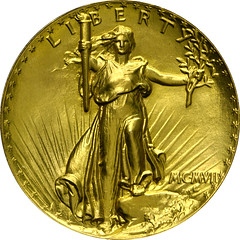 Heritage Auctions announced Wednesday that it has been selected to offer one of the most revered and valuable rare-coin collections in numismatics history: The Harry Bass Core Collection. The historic assemblage of some of the rarest U.S. gold coins and die patterns is estimated to be worth more than $60 million, and proceeds from its sale will benefit the dozens of Dallas-based nonprofits supported by the Harry W. Bass Jr. Foundation with a particular emphasis on early childhood education and literacy in Dallas.
Heritage Auctions announced Wednesday that it has been selected to offer one of the most revered and valuable rare-coin collections in numismatics history: The Harry Bass Core Collection. The historic assemblage of some of the rarest U.S. gold coins and die patterns is estimated to be worth more than $60 million, and proceeds from its sale will benefit the dozens of Dallas-based nonprofits supported by the Harry W. Bass Jr. Foundation with a particular emphasis on early childhood education and literacy in Dallas.
The collection, which the late Dallas oilman and philanthropist Harry W. Bass Jr. began assembling in the 1960s, has been on display at the American Numismatic Association's Edward C. Rochette Money Museum in Colorado Springs, Colo., since October 2000. Earlier this year, the foundation's trustees voted to sell the collection, which contains some 450 U.S. gold coins dating to the late 1700s, to increase its annual giving – from $2 million to at least $5 million each year, depending on the once-in-a-lifetime auction's final results.
We've had to say no to so many deserving groups, and with the sale of this collection, we can now expand our funding and reach a lot more people,
says F. David Calhoun, executive director of the Harry W. Bass Jr. Foundation. The pandemic has exposed how much need there is. It has been a very trying and challenging time for the nonprofit sector, especially in education, and it has magnified many times the needs of the underserved populations of Dallas.
In April, the foundation announced it would be removing its assemblage, which includes the only complete $3 gold coin collection, from the ANA museum and deaccessioning it to increase its philanthropic efforts in Dallas. The board of trustees hired Professional Coin Grading Service co-founder and numismatics expert John Dannreuther to manage the collection's sale, including selecting an auction house and third-party graders.
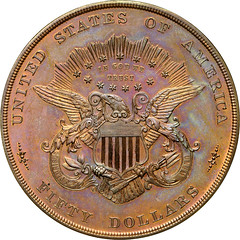 Heritage Auctions, founded in 1976 by Steve Ivy and Jim Halperin, was among several internationally renowned auction houses vying for the collection. Heritage was awarded the assemblage in early July and will offer The Harry Bass Core Collection in a series of auctions over the next year, beginning in the fall.
Heritage Auctions, founded in 1976 by Steve Ivy and Jim Halperin, was among several internationally renowned auction houses vying for the collection. Heritage was awarded the assemblage in early July and will offer The Harry Bass Core Collection in a series of auctions over the next year, beginning in the fall.
All the coins in the Bass Collection have been unavailable for decades; indeed, many trace their lineage to the heralded auction of Louis E. Eliasberg Sr.'s gold coin collection in 1982. All are uncertified or ungraded. Heritage will now request proposals from Professional Coin Grading Service, Numismatic Guaranty Company and Certified Acceptance Corporation to handle the grading and assist with marketing this world-renowned collection.
Executive Vice President Todd Imhof led Heritage's efforts.
We worked very hard to present a creative and enticing proposal to the Bass Foundation's trustees and are grateful and honored to have been selected, especially since the sale proceeds will stay here in Heritage's hometown,
Imhof says. For many decades, the foundation and its trustees have been remarkable stewards and custodians of this incredible collection. And their generosity has benefitted untold thousands.
Since the 1990s, the Harry W. Bass Jr. Foundation has supported qualified 501(c)(3) organizations throughout Dallas, primarily focusing on youth and education. Among its more than four dozen recipients, the foundation counts Frazier Revitalization in South Dallas, Head Start of Greater Dallas, Boys & Girls Clubs of Greater Dallas, the Momentous Institute, Bachman Lake Together in Northwest Dallas and Readers 2 Leaders in West Dallas. But the foundation also helps feed the hungry through such nonprofits as Crossroads Community Services (which provides nutritional assistance for at-risk children in Dallas County), and it supports Austin Street Center's work with Dallas' unsheltered.
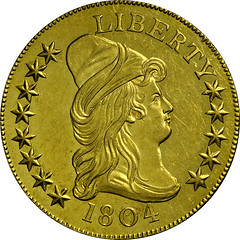
The pandemic was a giant paradigm shift regarding our outlook on the future,
Calhoun says. There is just so much need. In 2020 we diverted more than half of the annual funding to food-oriented organizations – and they used every cent of it. Late that year, we started discussing deaccessioning the collection, and we made the decision this year. It was a slow process, but ultimately, we asked ourselves: How many more organizations can we fund? How many more lives can we positively impact? And that's exciting to think about.
Says Heritage Auctions President Greg Rohan, This was a complex and competitive situation, and we're extraordinarily proud of the work Todd did in helping us make sure the Bass Collection remained in Harry's hometown. Of course, our real work is just beginning, and our team is excited about what's to come.
GOLD ROMAN COINS FOUND IN NORFOLK
This article describes a cache of Roman gold coins and other items found over several years in a farmer's field in Norfolk and acquired by the British Museum. -Editor
A cache of gold coins found buried on farmland in the United Kingdom has caught the attention of coin experts, who have linked the treasure trove to the Roman Empire.
So far, metal detectorists have discovered 11 coins on a remote stretch of cultivated field located in Norfolk, a rural county near England's eastern coast, and experts remain hopeful that more could be unearthed in the future.
Damon and Denise Pye, a pair of local metal detectorists, found the first of several gold coins in 2017, after local farmers finished plowing the soil at the end of the harvest season, which made the land prime for exploration. The haul has been dubbed "The Broads Hoard" by local numismatists (coin specialists and collectors), for its geographic location near The Broads, a network of rivers and lakes that run through the English countryside.
"The coins were found scattered around in the plow soil, which has been churned up year after year, causing the soil to be turned over constantly and led to them eventually coming to the surface," said Adrian Marsden, a numismatist at Norfolk County Council who specializes in ancient Roman coins. "The first year, [the Pyes] found four coins, and the following year one more, and then they found a few more the year after that. They've said to me that they think they found the last one, and I always say, 'I bet not.' They're slowly coming to the surface; I think there's more."
Marsden dated the "exceptional" bounty of gold coins to sometime between the first century B.C. and the first century A.D. Interestingly, all of the coins were minted before the Roman conquest, when Britain became occupied by Roman forces starting in A.D. 43 after an invasion launched by Rome's fourth emperor, Claudius.
In an article written by Marsden and published in a recent issue of The Searcher, a metal detectorist publication, he described there being two types of gold coins in the stash: one type was marked with the portrait of Augustus Caesar, the first emperor of Rome, with Gaius and Lucius, his grandsons and heirs to the throne, on the back of the coin. (However, both grandsons died before they could don the purple and become emperor.) The other also featured Augustus in profile on one side, but with Gaius on horseback on the reverse.
In addition to the newfound gold coins, over the years metal detectorists have discovered a treasure trove of Roman possessions in the region, including 100 copper alloy coins, two denarii (Roman silver coins), brooches and more. According to Marsden's estimate, the gold coins together are valued at approximately $20,000 pounds ($25,000 USD). The British Museum recently acquired the coins as part of its permanent collection.
Found via The Explorator newsletter. To subscribe to Explorator, send a blank email message to: explorator+subscribe@groups.io. -Editor
To read the complete article, see:
Ancient hoard of gold Roman coins discovered in plowed UK field
(https://www.livescience.com/roman-gold-coin-hoard-discovered-uk)
SILVER COINS OF HARALD BLUETOOTH FOUND
Silver coins minted by Viking king Harald Bluetooth have been uncovered in Finland. -Editor
In May of 2022, Finnish metal detectorists discovered a silver cache from the Viking Age in a field in Mynämäki, a municipality of Finland located in the Southwest Finland region.
The follow-up excavations carried out by the Finnish Heritage Agency uncovered silver coins and pieces of silver jewelry.
The hoard included 12 coins minted by Viking king Harald Bluetooth. They are considered very rare, as only a couple of such coins have previously been found in Finland.
Furthermore, researchers were able to make a noteworthy discovery – the objects were brought to Mynämäki from Poland, The Viking Herald reports.
The batch of silver objects was found during a metal-detecting trip by enthusiasts of the Vakka-Suomen Metallinetsijät association.
My hands were shaking… This was my most spectacular find so far and the first intact cache I've found,
metal detectorist Oskari Heikkilä said.
Jani Oravisjärvi, the curator of the Finnish National Museum who investigated the coins, described the find as important and interesting.
The find contains money from a range of around 250 years. The majority of the coins date to the last decades of the 9th century, but none of the coins in the cache date to the 11th century with certainty.
To read the complete article, see:
Silver coins minted by Viking king Harald Bluetooth discovered by metal detectorists in Finland
(https://norwaytoday.info/news/silver-coins-minted-by-viking-king-harald-bluetooth-discovered-by-metal-detectorists-in-finland/)
ANS MAY RETURN PEACE MEDAL TO PAWNEE NATION
Coin World reported that the ANS may be returning an Indian peace medal in its collection to the Pawnee Nation of Oklahoma. -Editor
The American Numismatic Society is seeking to repatriate a silver Abraham Lincoln Indian peace medal struck by the U.S. Mint that has been in the society's collection since 1915 after its removal three years before from the site of a Pawnee Nation burial ground in Nebraska.
The National Park Service on behalf of the ANS posted notice on the Federal Register June 27 of the society's intent to repatriate the medal to the Pawnee Nation of Oklahoma.
Any competing claims have until July 27 to be filed.
For more information on the piece, see:
Silver Medal, U.S. Mint, 1861 - 1865. 1915.25.1
(http://numismatics.org/collection/1915.25.1)
To read the complete article, see:
ANS will repatriate peace medal held since 1915
(https://www.coinworld.com/news/us-coins/ans-will-repatriate-peace-medal-held-since-1915)
THE CARNEGIE HERO MEDAL
Peter Jones submitted this background on the Carnegie Hero Medal. Thanks! -Editor
In last week's E-Sylum you showed a picture of one of Holabird's lots, the Carnegie Hero Medal. I would like to show the medal in more detail. In 1864, the up-and-coming Andrew Carnegie invested $40,000 in Storey Farm, an amazingly successful steel factory. He adapted the Bessemer process using mass production and low wages to drive down prices. He vertically integrated with suppliers, and in 1883, bought the rival Homestead Steel Works. Despite black marks like the Johnstown flood and the Homestead Plant Strike, Carnegie sold his steelworks to master financier J.P. Morgan in 1901 for $480 million, of which Carnegie personally got $225 million. US Steel was the first billion dollar company.
Morgan paid him with 2,250 5% 50-year $100,000 gold bonds (see attached photo). The interest alone was $11.25 million a year! Carnegie's Hudson Trust company in Hoboken, NJ, had to build a special vault to house his bonds!
Previously rapacious, Carnegie changed. Instead of being a driven businessman, he became a driven benefactor. He spent $350 million on charities until he died in 1919. He gave particularly to libraries, universities, and educational institutions.
He also established the Carnegie hero fund to reward bravery. I show a picture of an unawarded medal. A reverse cartouche allowed an insert in the die to produce details of the hero. This example shows the cartouche blank.
To read the earlier E-Sylum article, see:
HOLABIRD JULY 2022 SALE SELECTIONS : Lot 3317: 1905 Carnegie Hero Medal
(https://www.coinbooks.org/v25/esylum_v25n28a17.html)
THE BOOK BAZARRE
R.S. Yeoman and His Remarkable Red Book,also tells the history of Whitman Publishing as well as his own unique life story in and out of numismatics. Enjoy more than 100 years of fascinating numismatic history in 352 richly illustrated pages, 8.5 x 11 inches, hardcover. Order your copy online at Whitman.com , or call 1-800-546-2995.
JOSEF DRACH'S EUROPEAN PEACE DOLLAR
The Vienna Museum of Art History stores the designs and printing plates of Josef Drach's European Peace Dollar. Found via News & Notes from the Society of Paper Money Collectors (Volume VIII, Number 4, July 12, 2022). -Editor
In 1922 Josef Drach personally ordered a design for "European Peace Dollar" banknotes from the artist Alfred Offner [Czernowitz [1879 - 1937] , and even had printing plates prepared. The 2 EFD banknote shows a portrait of the Austrian Nobel Peace Prize winner Bertha von Suttner.
In 1920, Josef Drach, a wealthy Jewish businessman and art dealer from Czernowitz, developed detailed plans for establishing a European Union with Vienna as its capital. Drach raised funds for a European Peace Bank whose goal was to introduce a single currency in Europe: the European Peace Dollar. One side of the coin displayed the image of Bertha von Suttner, the Austrian writer who won the Nobel peace prize in 1905, the other side the slogan: 'Nieder mit den Waffen!' (Down with the Weapons!).
Born in Czernowitz in the year 1883, he came towards the end of World War I to Vienna and established a prosperous art and antiques trade on Dr.-Karl-Lueger Place No. 5.
Deeply impressed by the humanitarian, social and economical disaster caused by World War I, Josef Drach became a militant pacifist, an enthusiastic advocate for the idea of unified Europe with a single European currency. For a certain period of time Josef Drach and his pan-European idea hit the newspapers headlines.
At the beginning of the 1920s, the Viennese art dealer Josef Drach regarded the financial sector as the key to the formation of a 'United States of Europe'. A 'European Peace Bank', to be founded in Vienna on the basis of a legal agreement with the League of Nations, and with a ground capital of 80 million US dollars, was to issue a 'European Peace Dollar' as a means of international payment and European currency.
In 1925, the internationally respected stock exchange periodical 'Wiener Börsenkurier' commented optimistically on the plan - if with hindsight rather naïvely: 'Titling it as peace money makes future wars impossible, because it loses any value in a state of war. And without money there can be no war.' Josef Drach threw his full energy and resources into the task of propagating his European idea. Numerous prominent individuals signed his petition, proclaiming their readiness to buy shares in the 'European Peace Bank' - among them the young Dr. Adolf Schärf who became President of the Republic of Austria after the Second World War.
Drach's utopia soon ran into the quicksands of the world economic crisis. He was personally satirized as 'Drache' (dragon), while his 'peace dollar' became known as the 'Viennese drachma' (an allusion to the Greek currency). During the crisis of 1930, the subject of a currency union among some of the European states was raised again in Paris, but came nowhere near realization.
After the Nazi occupation of Austria in 1938, Drach's attempt to emigrate to the United States failed because of the bureaucratic attitude of the US Consulate in Vienna. He gave all the papers on his European project to his friend, the art dealer Ferdinand Spany, before he was forcibly 'resettled' in Eastern Europe. In 1918, Drach had originally fled before the advancing Russian armies from Bukovina, the most easterly crown land of the Austro-Hungarian Empire. After 1940 there was no road back to Vienna again."
To read the complete article, see:
The Capital of the United States of Europe will be Vienna (1065 km)
(http://hauster.blogspot.com/2016/07/the-capital-of-united-states-of-europe.html)
LOOSE CHANGE: JULY 17, 2022
Here are some additional items in the media this week that may be of interest. -Editor
A CoinWeek article by Michael Shutterly discusses the Legionary Denarii of Mark Antony. -Editor
This denarius was struck for Antony's 3rd Legion. It sold for $1,400 at an auction in January 2021. This legion was probably the legion that appears in the historical record as Legio III Gallica, a legion that Julius Caesar raised during his campaigns in Gaul and which Antony took over after Caesar's death. It is also possible that this was an entirely different 3rd Legion, one which Antony himself raised in North Africa.
To read the complete article, see:
CoinWeek Ancient Coins – The Legionary Denarii of Mark Antony
(https://coinweek.com/ancient-coins/coinweek-ancient-coins-the-legionary-denarii-of-mark-antony/)
Paul Horner passed along this article about a man who found an old stash of cash under his porch. Thanks. -Editor
A New Jersey man discovered a load of cash under the porch of his Wildwood home.
Area resident Rich Gilson was making renovations on his home before he went digging and discovered the expected load of cash.
He later found two tightly rolled cigar-shaped wads of cash containing $10 and $20 bills. Gilson said that he found over $2,000, which was said to be preserved in its original 1934 condition.
"Either somebody robbed a bank and buried it there, or somebody didn't trust the banks in 1934 during the height of the depression," he told Fox 29 Philadelphia.
Paul adds:
"I wonder if he just took it to the bank, or had sense enough to visit a coin shop first. I see some $10 silver certificates in the stash."
Of course, paper money isn't dated by year of manufacture like coins. These notes are from the "Series of 1934" and could have been printed several years after that date, meaning the stash could well date from the 1950s. I doubt many of these would be worth much more than face value in this condition. Nice find regardless. -Editor
To read the complete article, see:
New Jersey man discovers $2,000 cash from 1934 under his porch
(https://www.foxnews.com/us/new-jersey-man-discovers-cash-under-porch)
In the latest update to the ongoing saga of "amateur" vs "professional" athlete, Jim Thorpe's 1912 Olympic Gold medals have been reinstated. -Editor
Jim Thorpe was reinstated Friday as the winner of the 1912 Olympic pentathlon and decathlon in Stockholm, more than a century after he was stripped of his gold medals for violating amateur sports rules at the time.
In an announcement, the International Olympic Committee declared Thorpe the winner of the events, which coincided with the 110th anniversary of his decathlon win. King Gustav V of Sweden proclaimed him as "the greatest athlete in the world."
Thorpe, a Native American, returned to a ticker-tape parade in New York, but months later it was discovered he had been paid to play minor league baseball over two summers, an infringement of the Olympic amateurism rules. He was stripped of his gold medals in what was described as the first major international sports scandal.
In 1982, the IOC gave Thorpe's family duplicate gold medals to his family but his Olympic records were not reinstated, nor was his status as the sole gold medalist of the two events.
To read the complete article, see:
Jim Thorpe reinstated as winner of 1912 Olympic gold medals after being stripped
(https://www.foxnews.com/sports/jim-thorpe-reinstated-winner-olympic-gold-medals-being-stripped)
Here's another one of those "don't pick up that money!" stories, this time from Nashville. -Editor
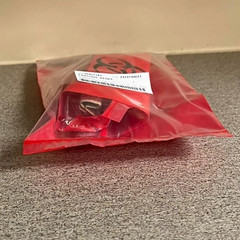 Renee Parsons said she picked up a dollar bill off the ground at the McDonald's on Highway 70 and soon passed out.
Renee Parsons said she picked up a dollar bill off the ground at the McDonald's on Highway 70 and soon passed out.
It was only a matter of minutes after picking up the dollar bill that Renee Parsons felt as though she couldn't breathe and her body began to feel numb.
Justin Parsons said his wife's speech began to slur before she went unconscious, while he drove to the closest hospital. I grabbed my husband's arm with the same hand that I had the money in and said, Justin please help me, it won't stop it's getting worse.
The family says the responding Metro police officer told them the dollar bill had likely been used to cut or store drugs.
To read the complete article, see:
‘I thought I was dying': Woman hospitalized after picking up $1 bill in Nashville
(https://www.wkrn.com/news/local-news/nashville/i-thought-i-was-dying-woman-hospitalized-after-picking-up-1-bill-in-nashville/)
Planning to fake your own death? Better find a new hobby. -Editor
We never hear from people who do this job well, but to succeed at pseudocide, you really do have to be prepared to give up everything you know and love — for good. You can't talk to anyone you know (they're being watched), you have to give up your pets (harder than family, sometimes) and you have to figure out how to support yourself off the books, getting paid under the table or in cash. Your college degree means nothing. Your specialized skill becomes useless. All of your hobbies and interests are bunk, because those things are precisely what investigators like Ahearn and Rambam will be analyzing obsessively for signs of you. Rambam once spent weeks going to mind-numbingly boring coin shows around New York City to locate a coin collector who had supposedly died, and that's exactly where he caught him.
And while he's lurking at coin shows? The rest of his team is lurking everything else. Any investigator worth their salt has a network of local, on-the-ground specialists that help them stay on top of leads, who speak the language if they're in a foreign country and who know the ins and outs of every neighborhood they're investigating.
Has anyone heard this story before? Who was the undead numismatist? -Editor
To read the complete article, see:
Inside the World of Investigators Who Know You've Faked Your Death
(https://getpocket.com/explore/item/inside-the-world-of-investigators-who-know-you-ve-faked-your-death)

